
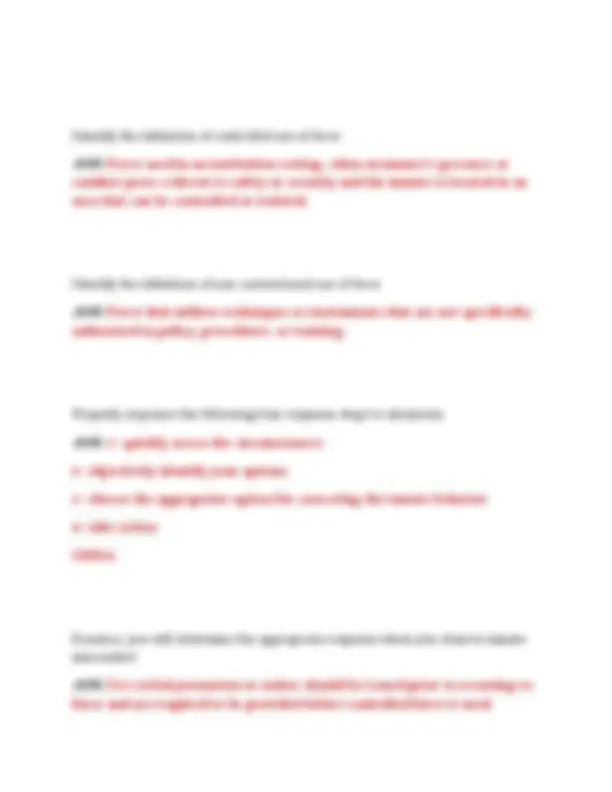
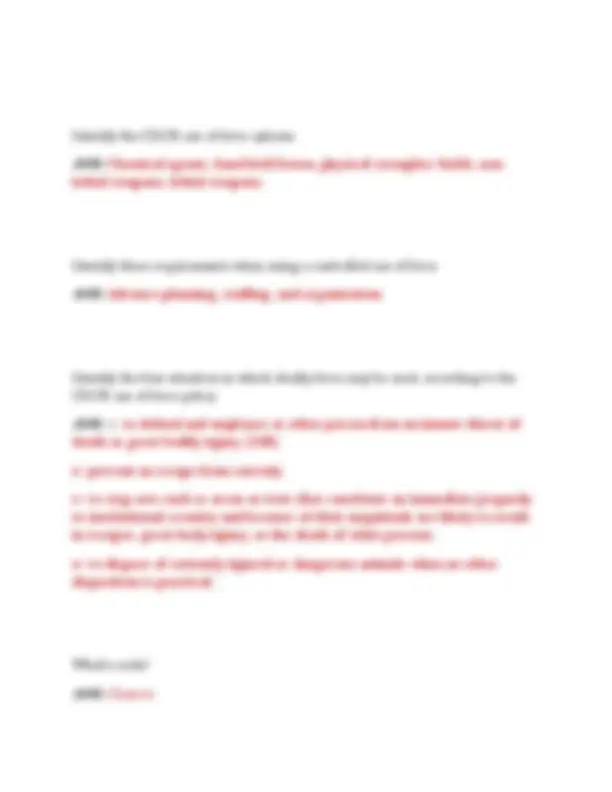
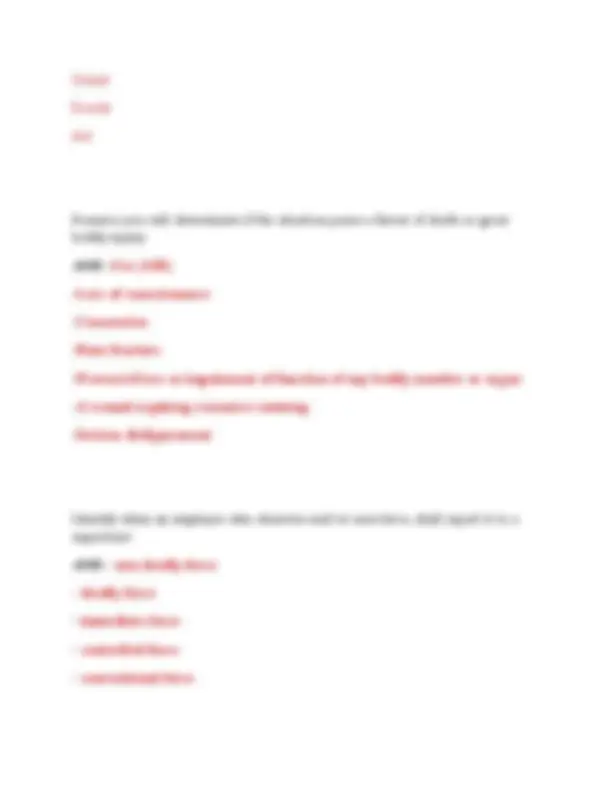
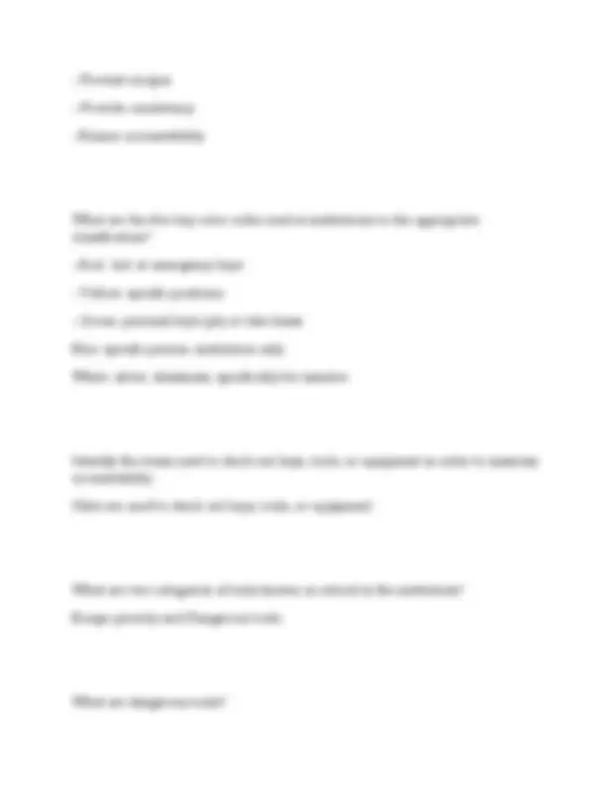
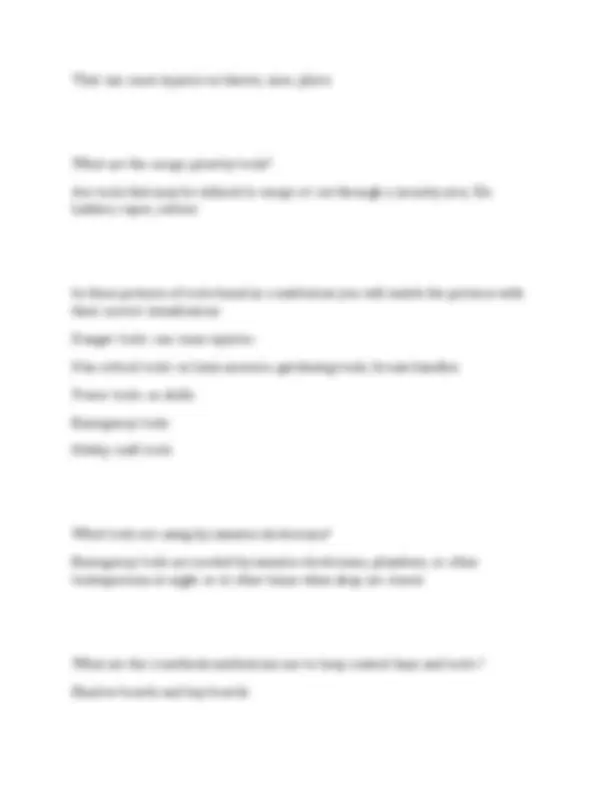
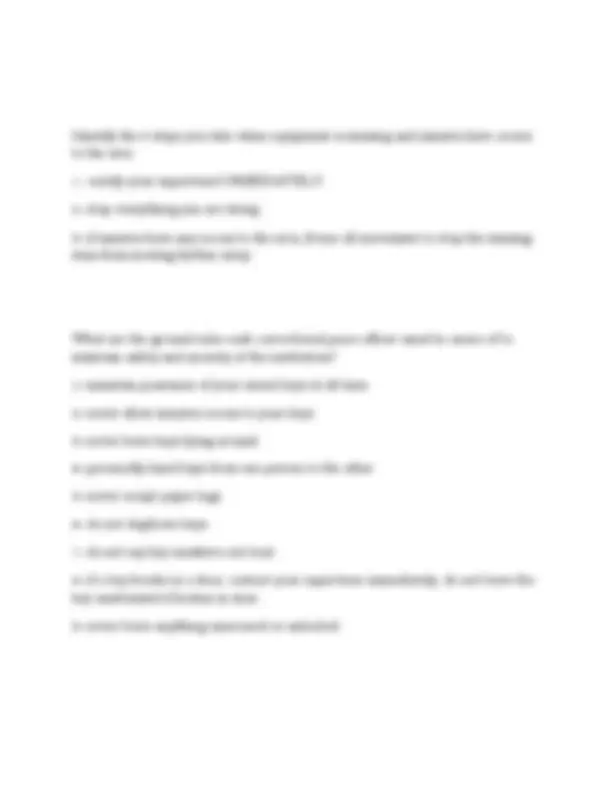
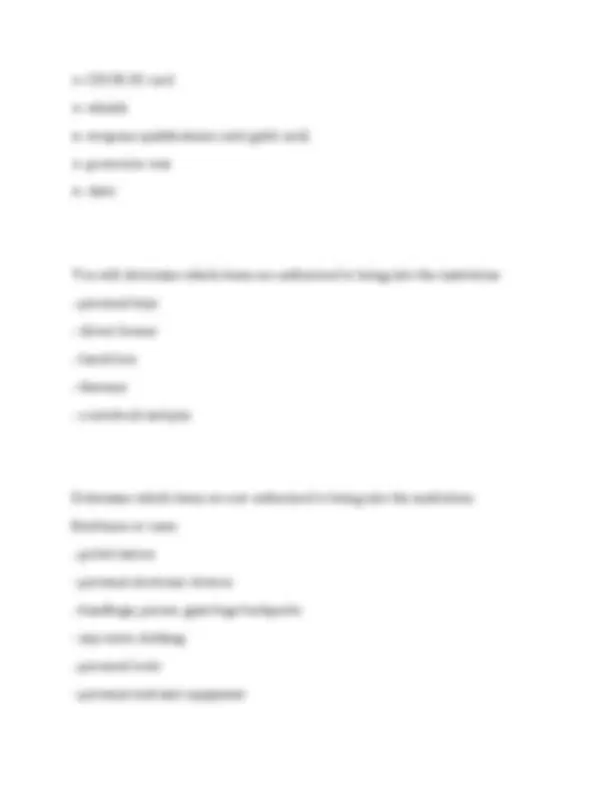
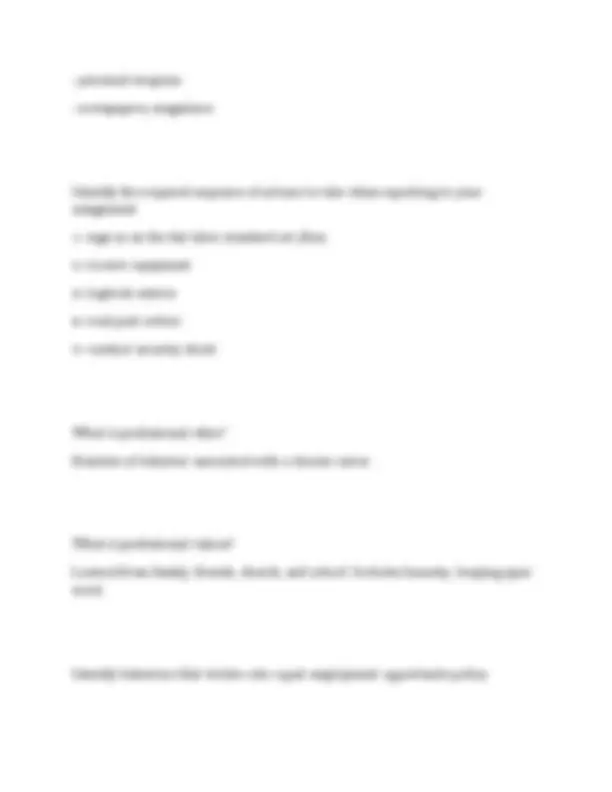
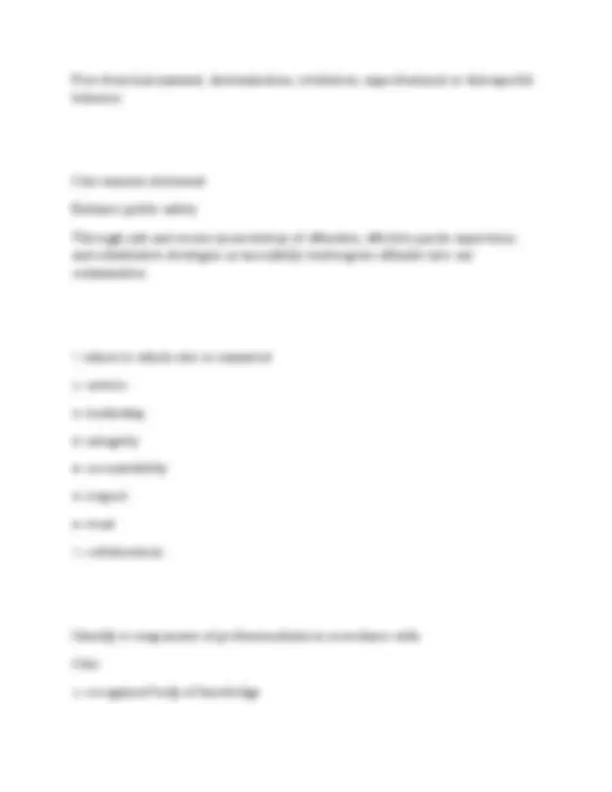
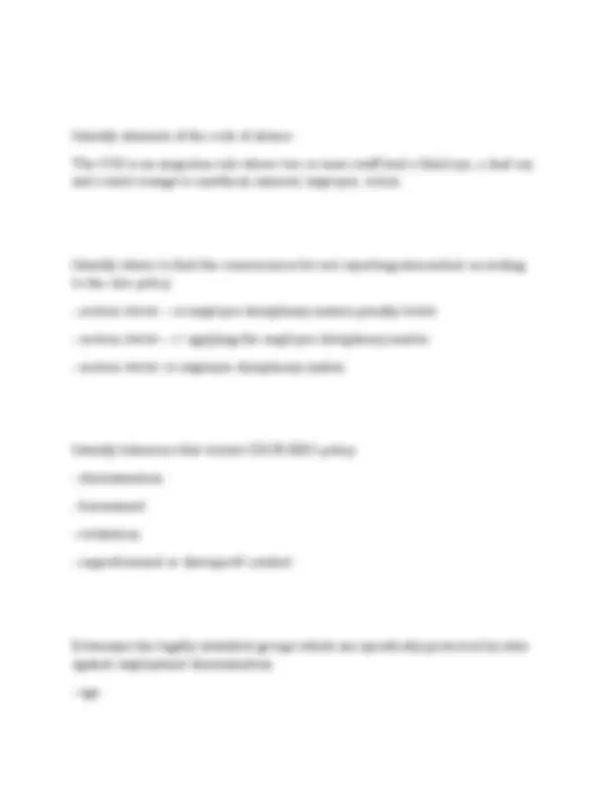
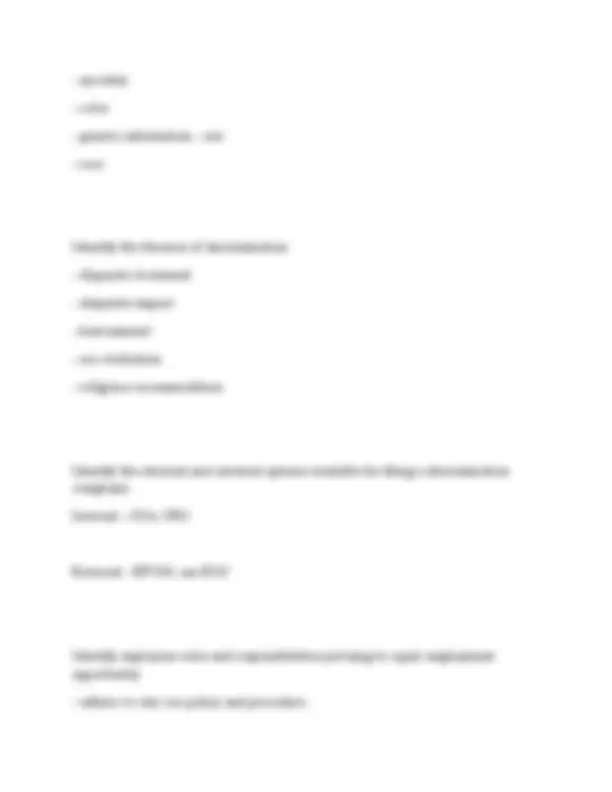
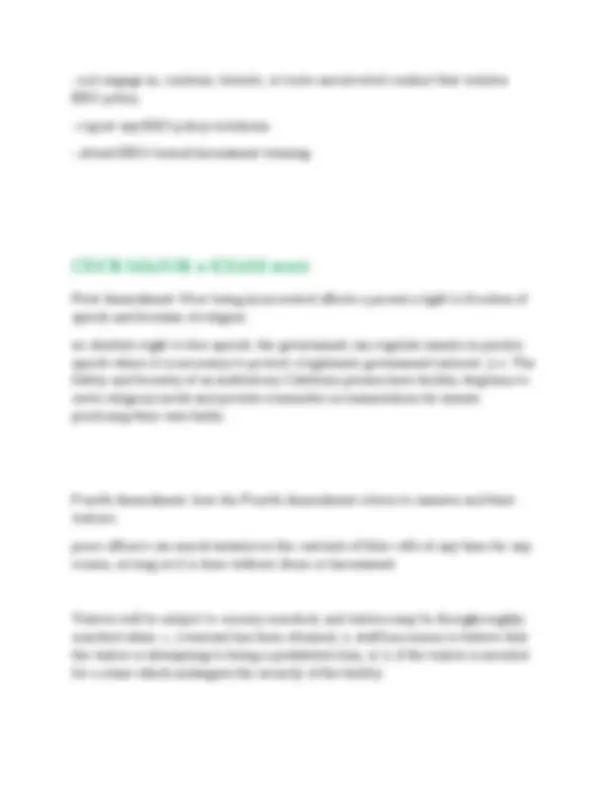
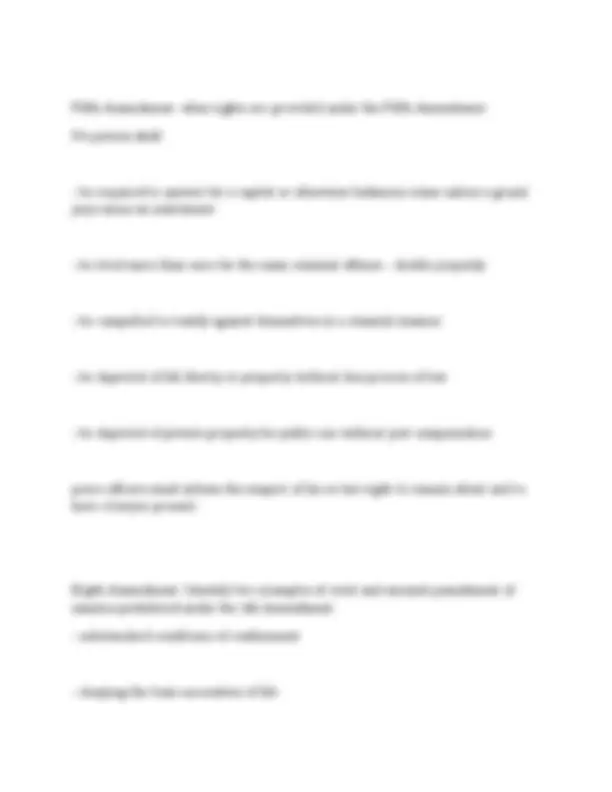
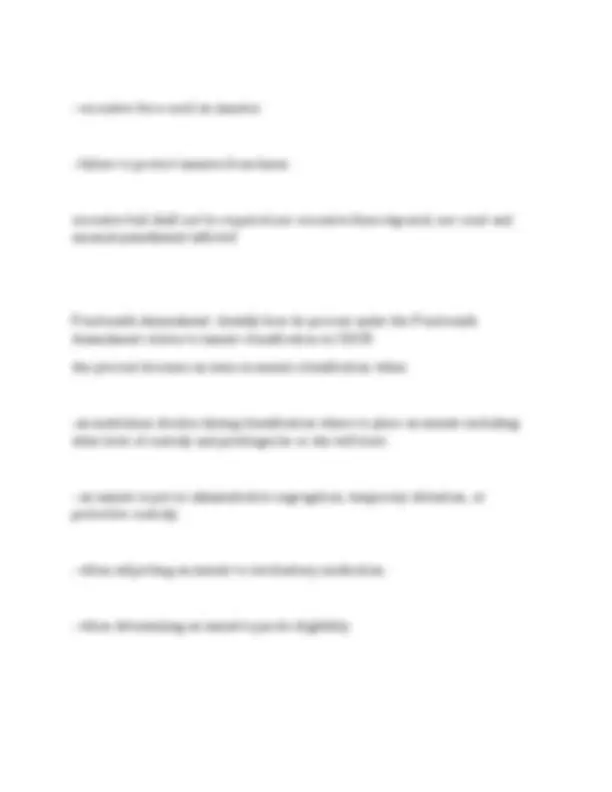
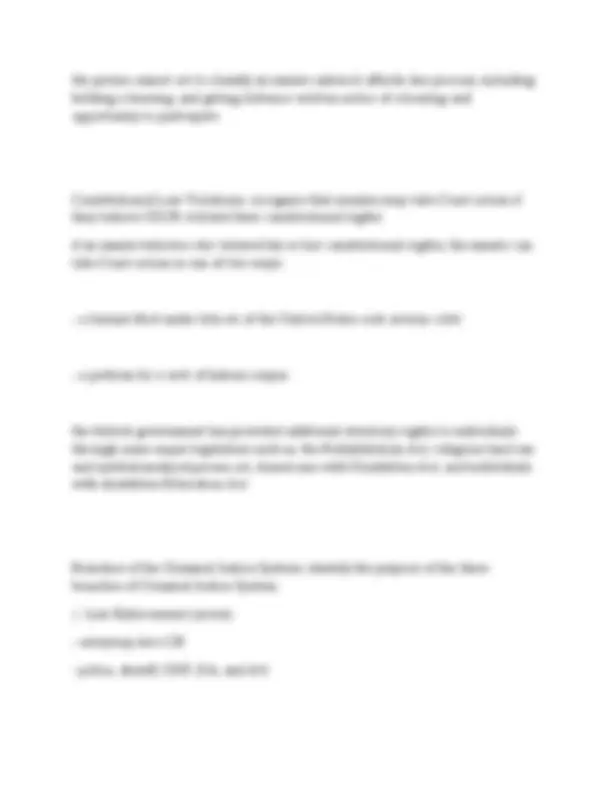

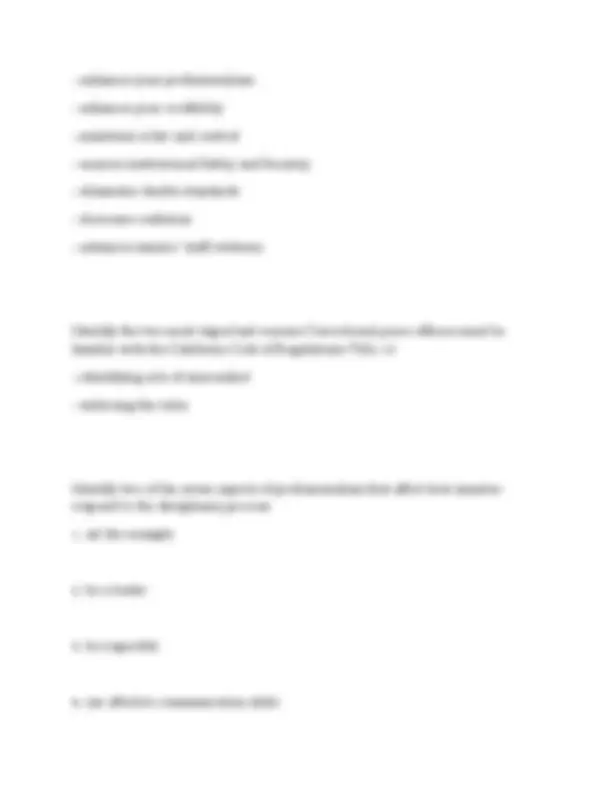
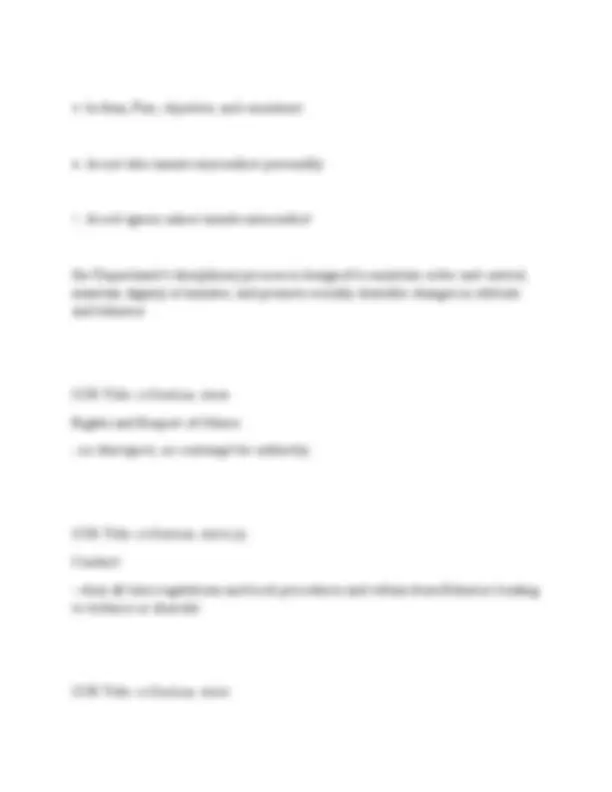
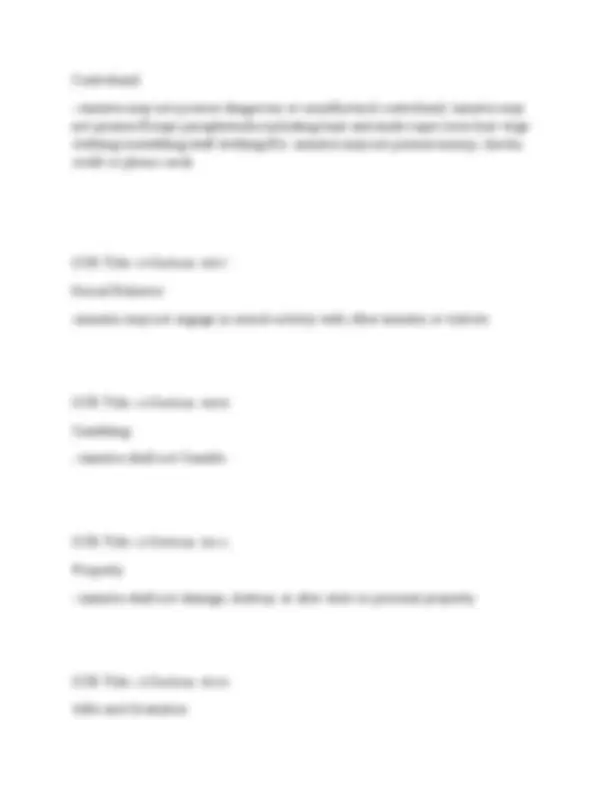
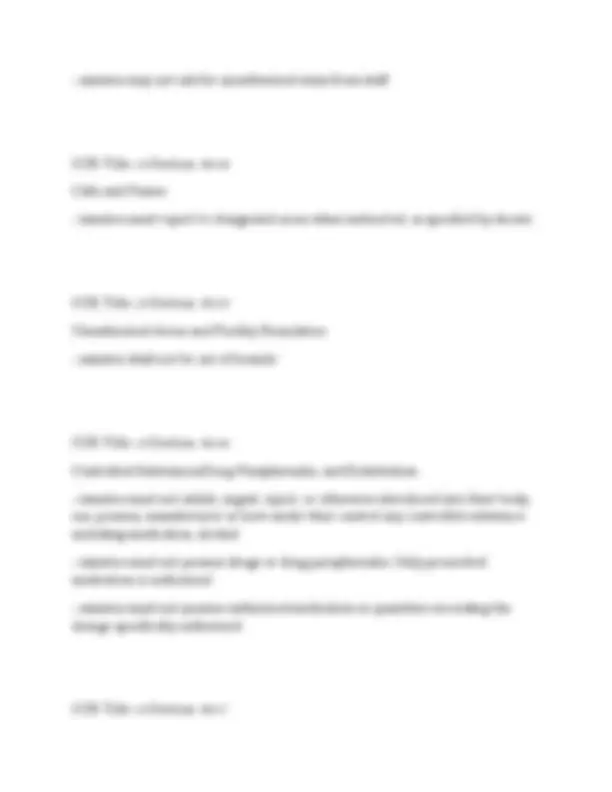
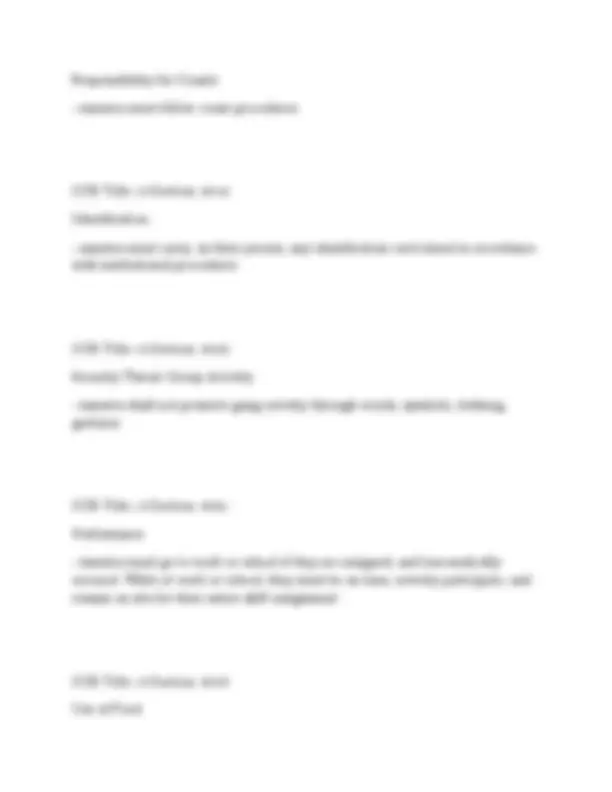
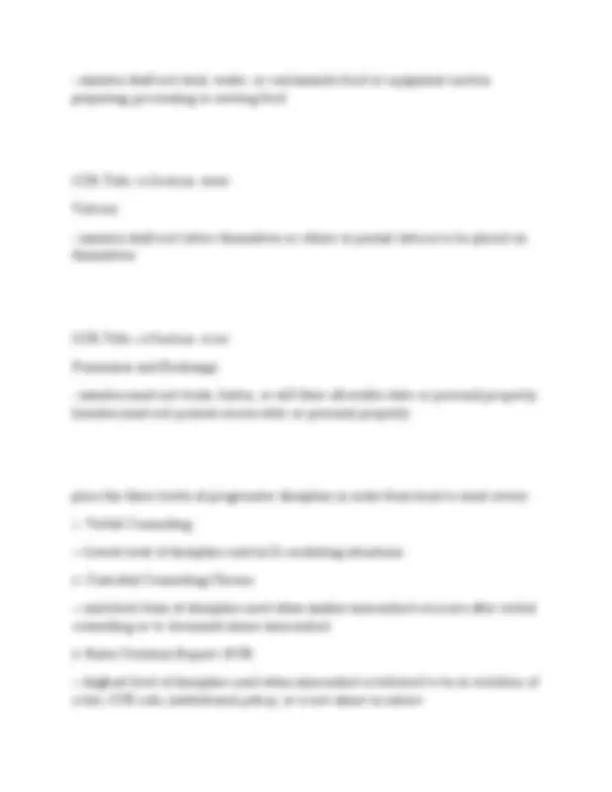
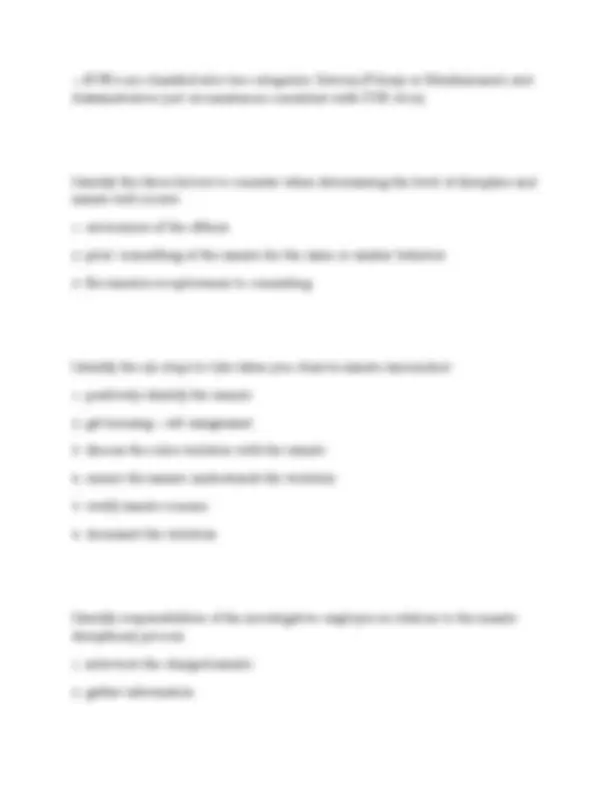
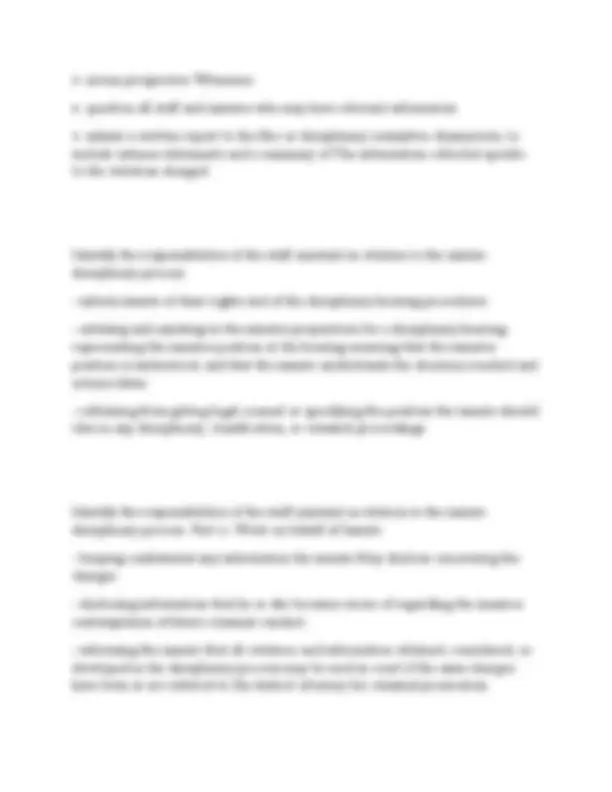
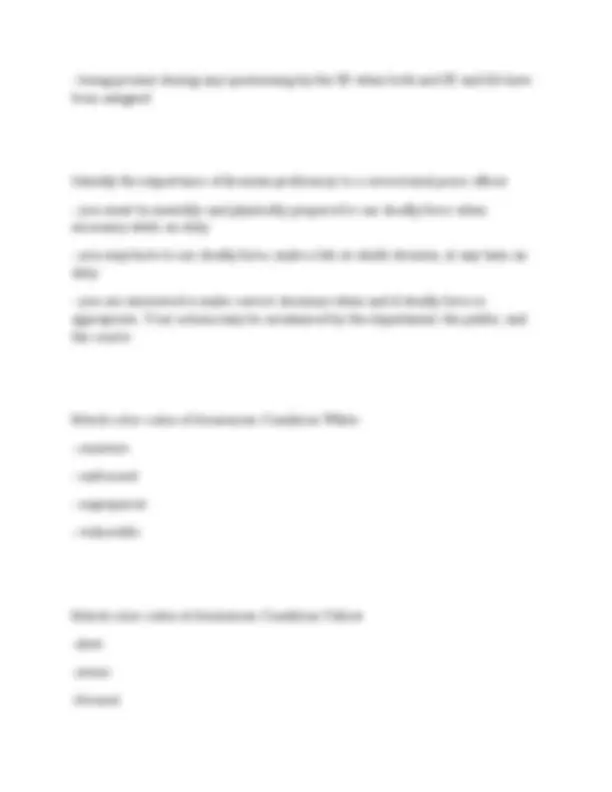
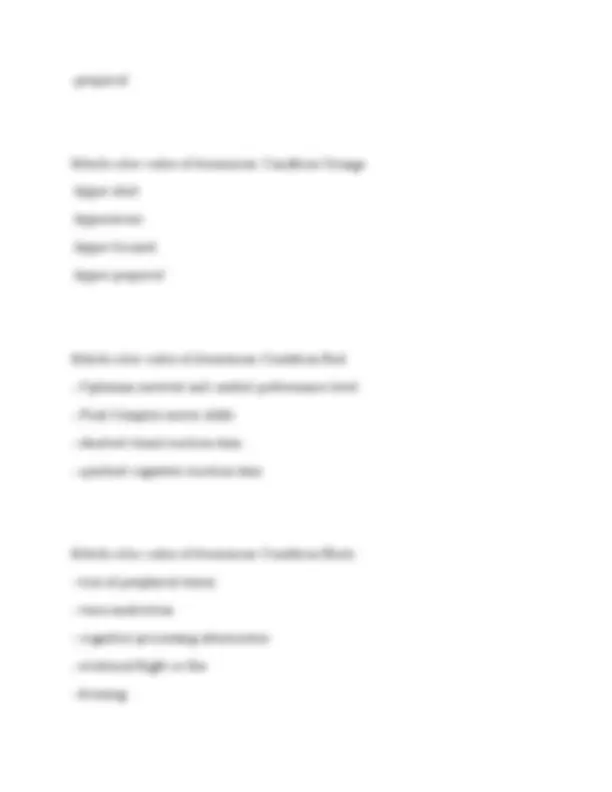
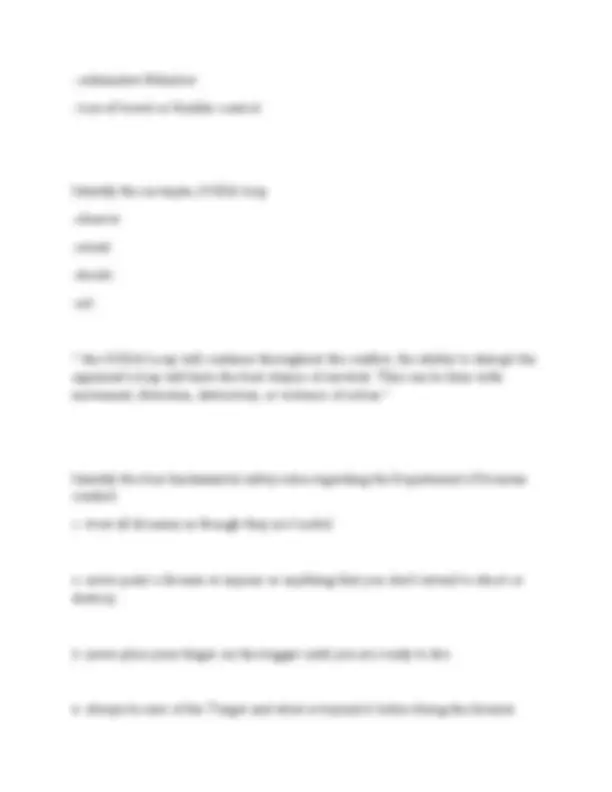
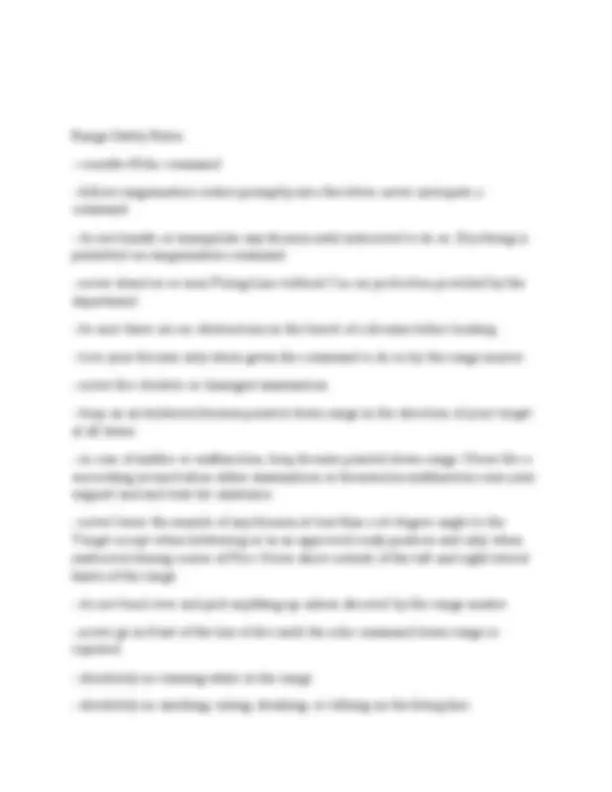
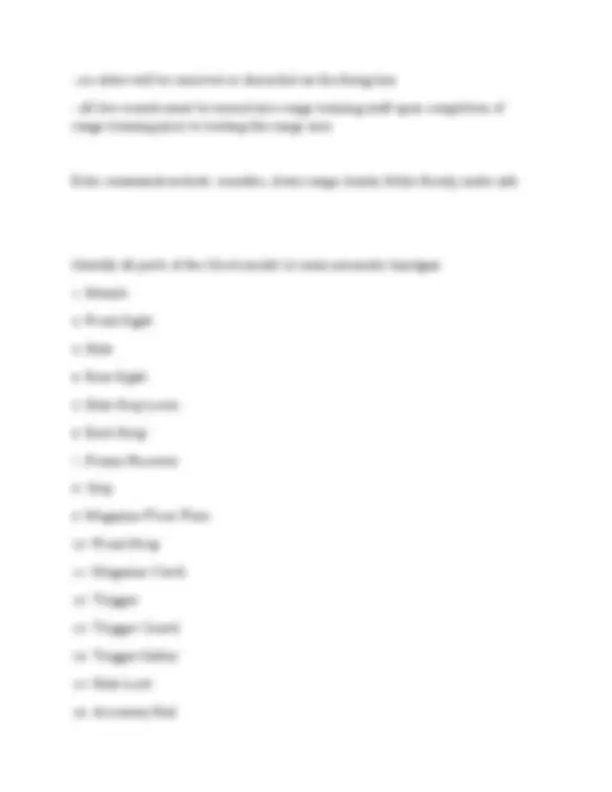
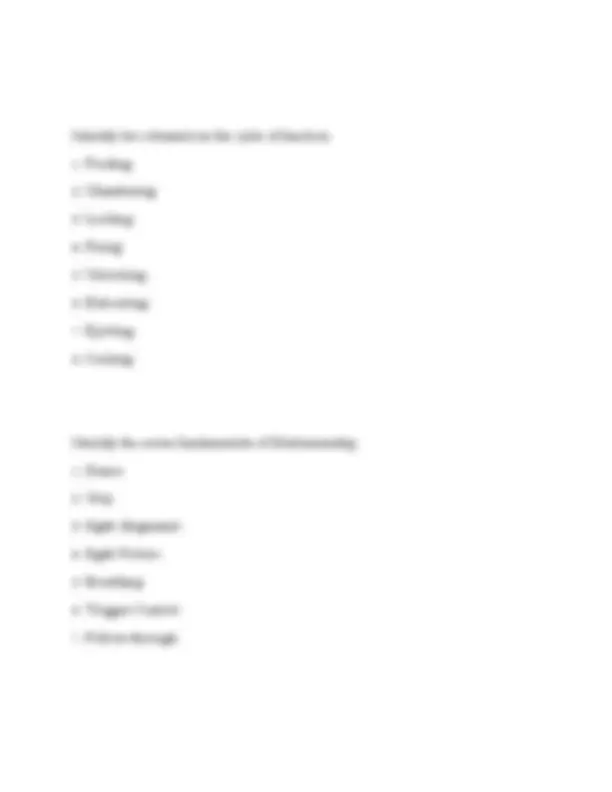
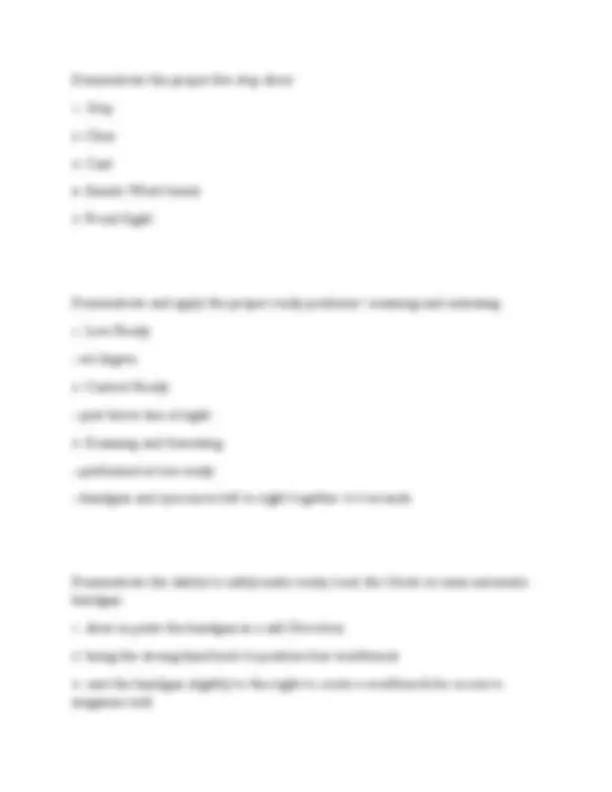
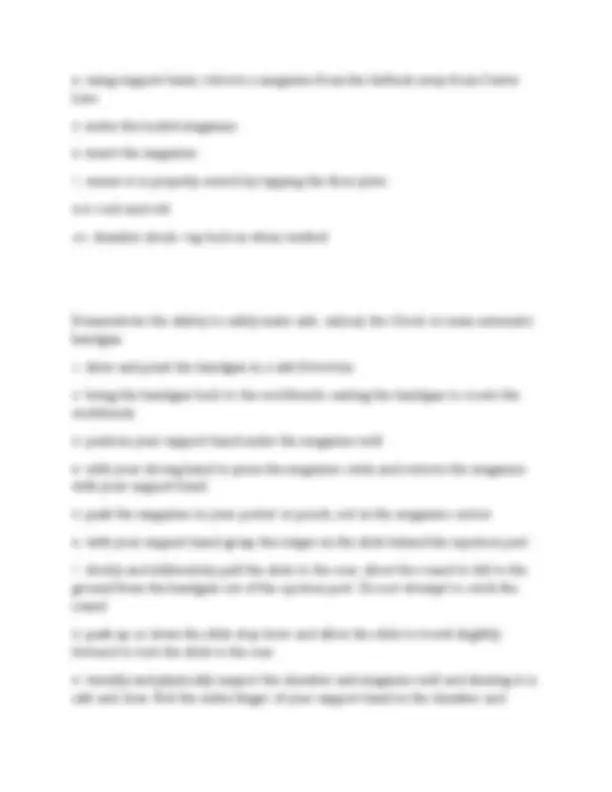
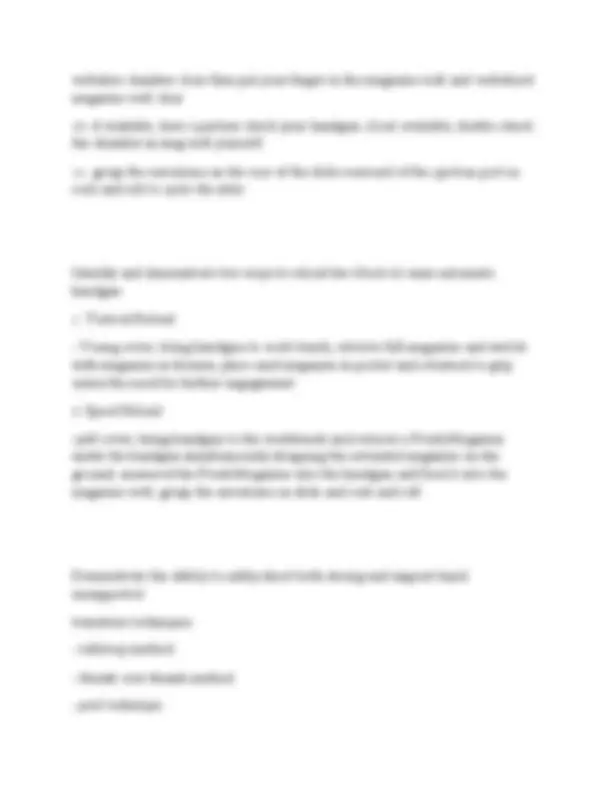
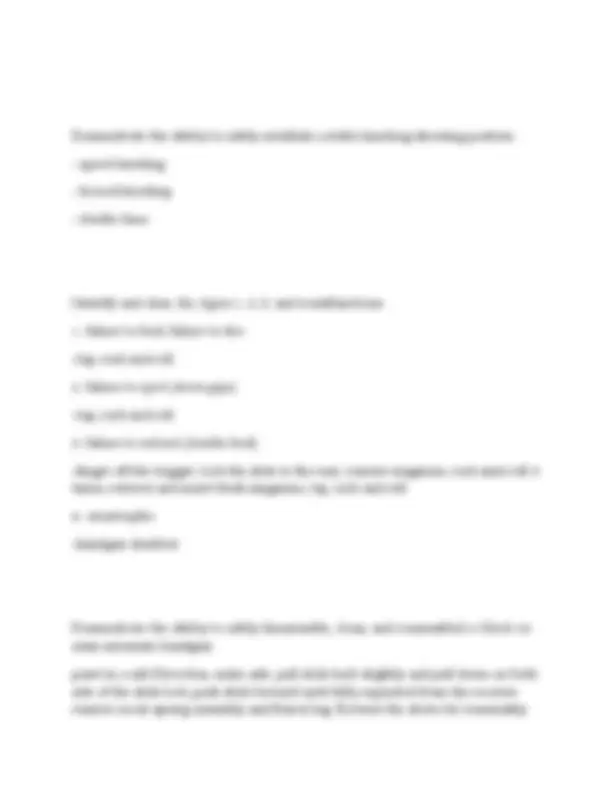
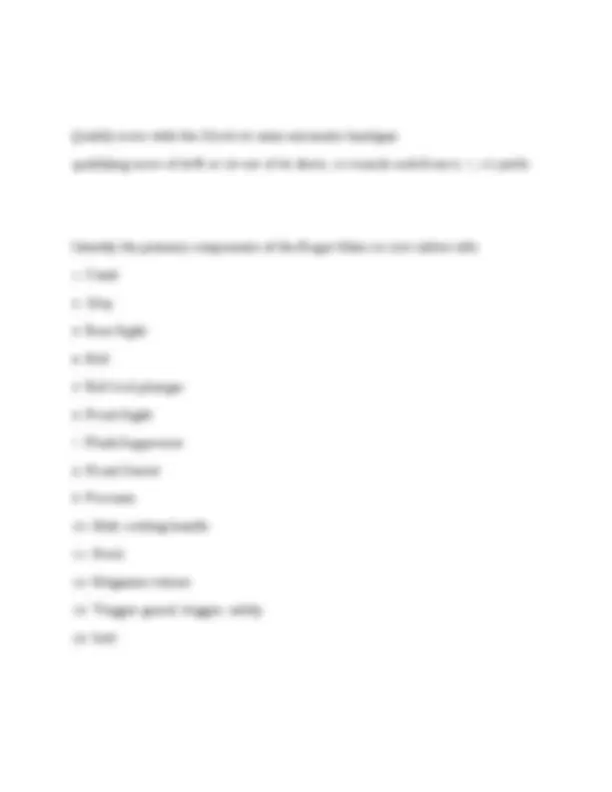
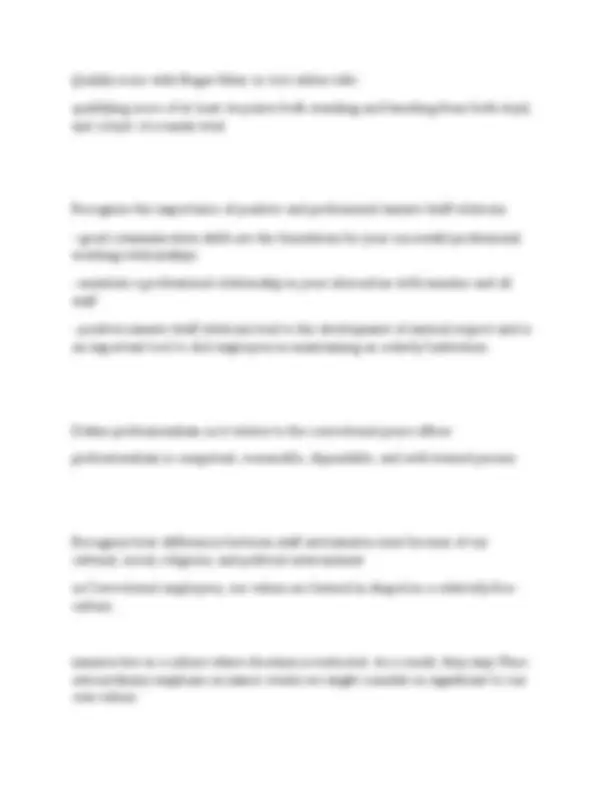

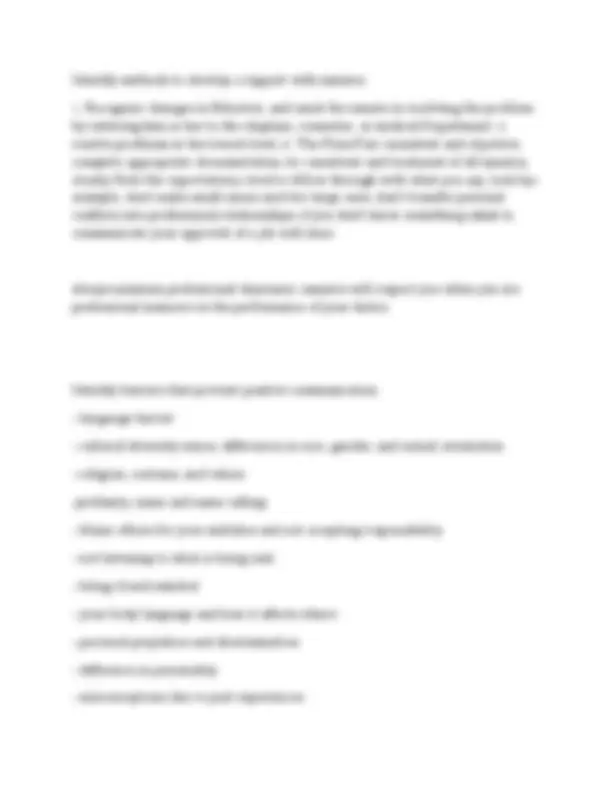
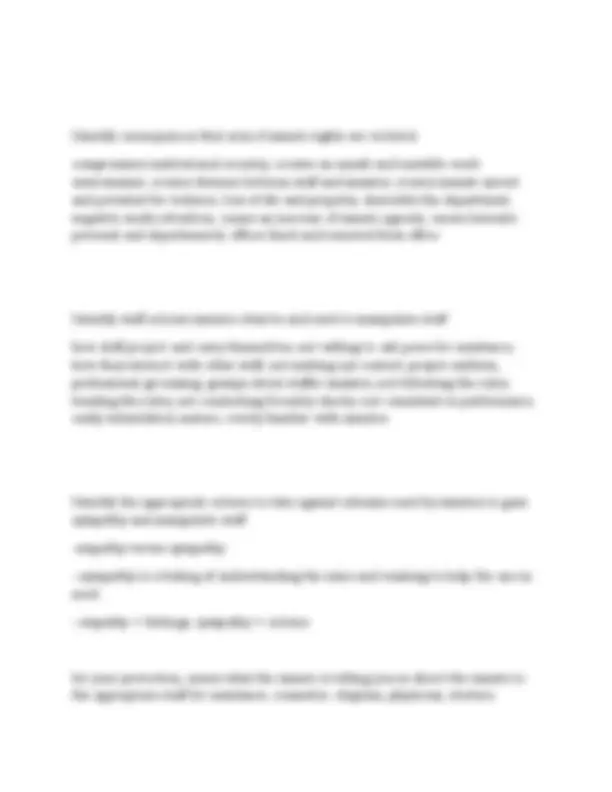
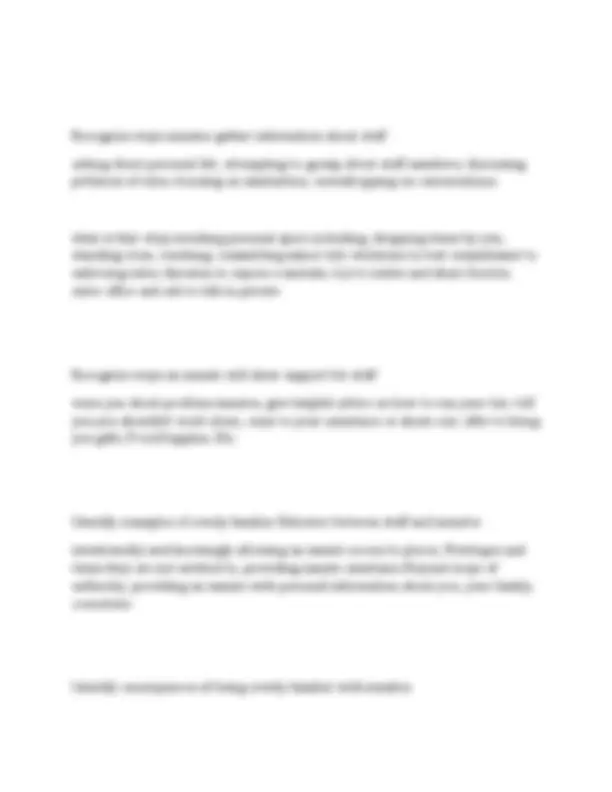
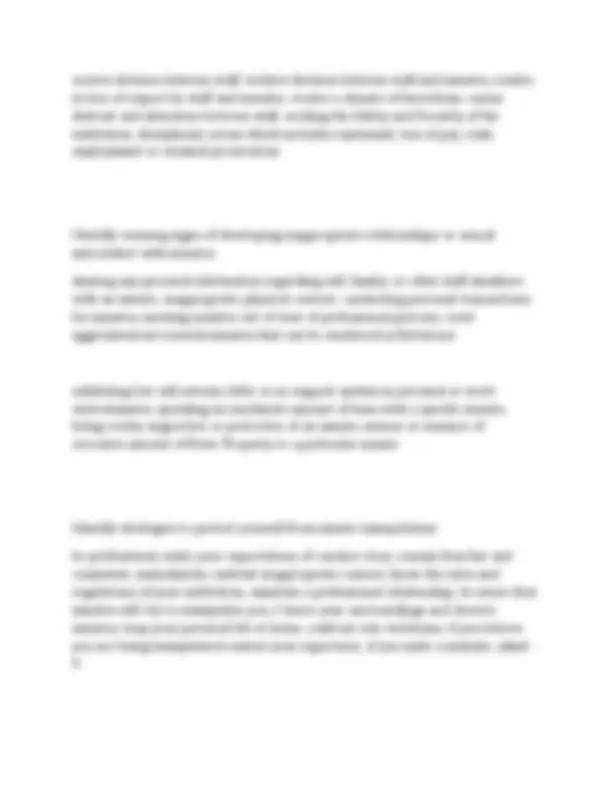
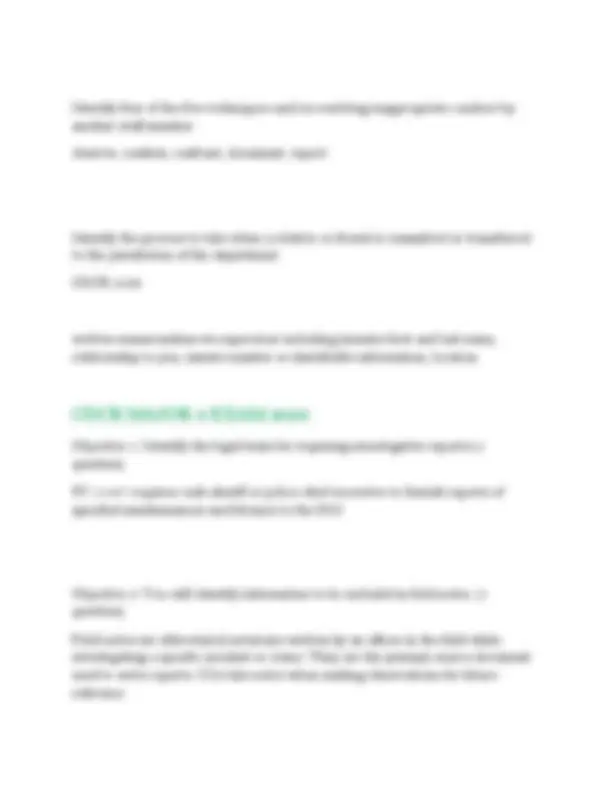
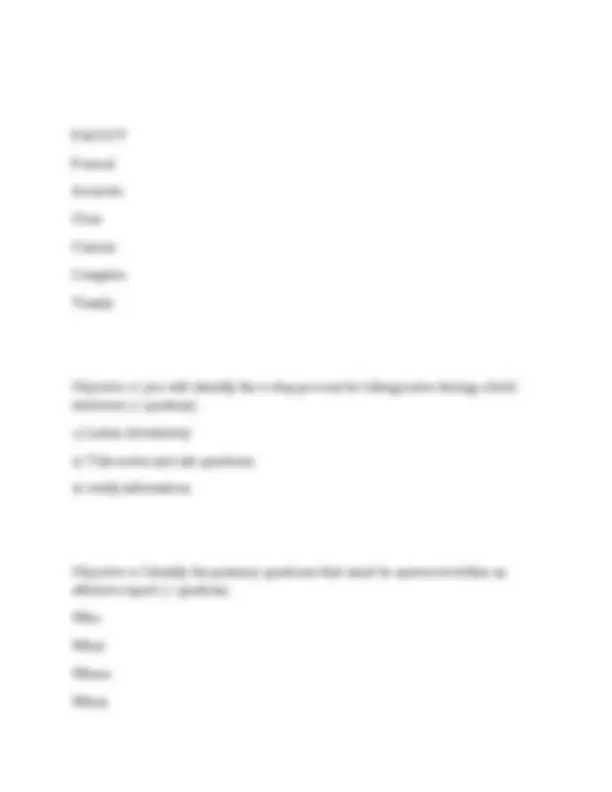
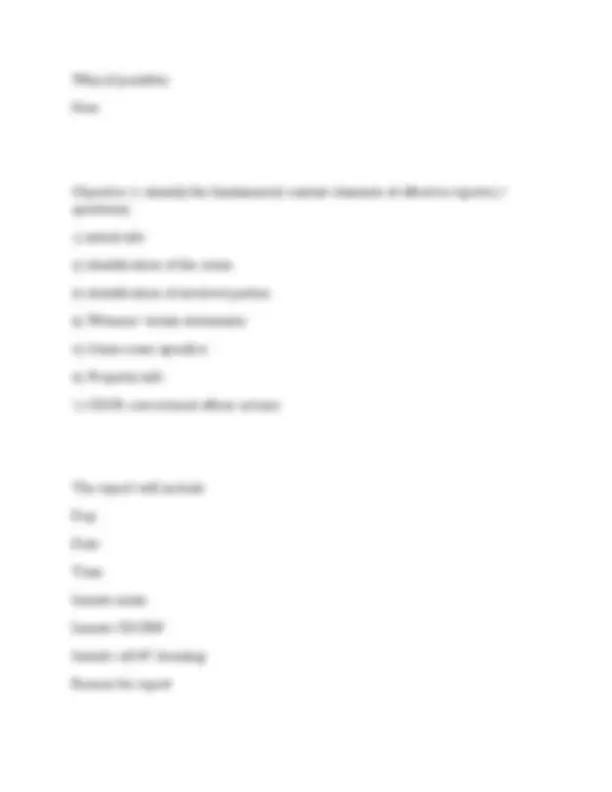
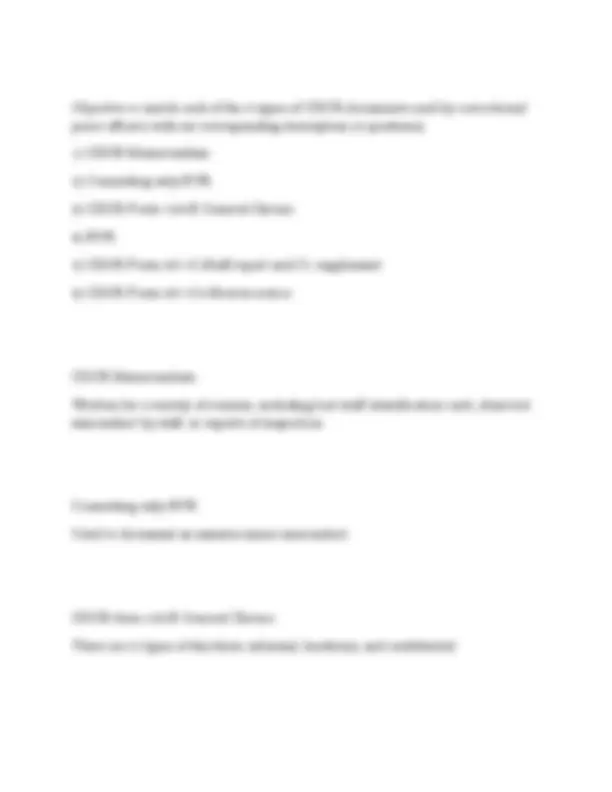
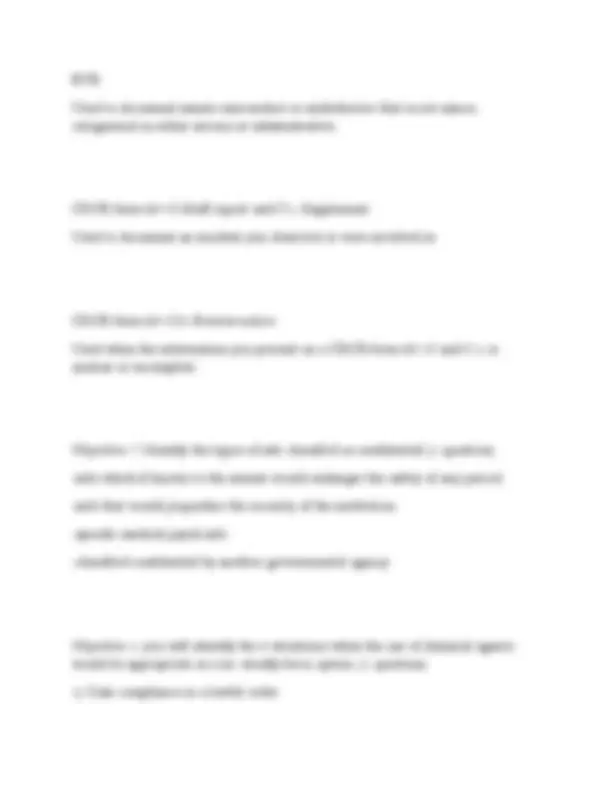
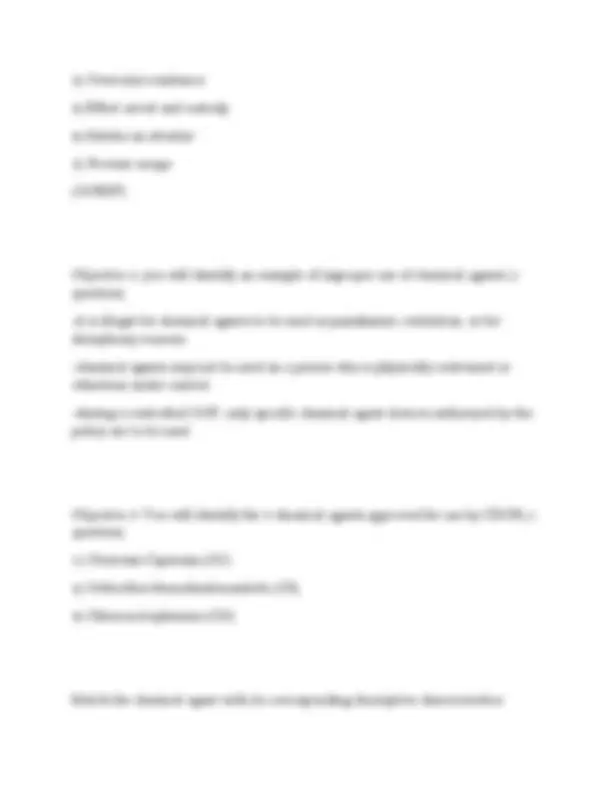
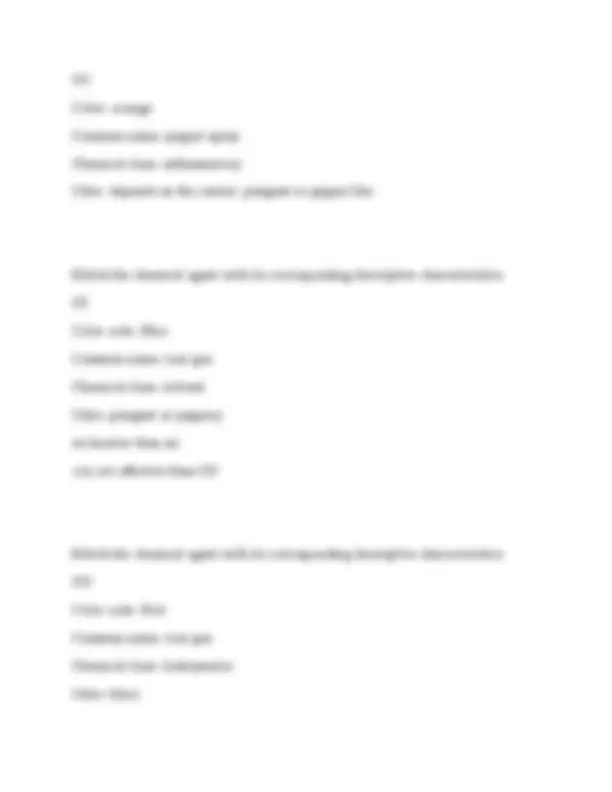
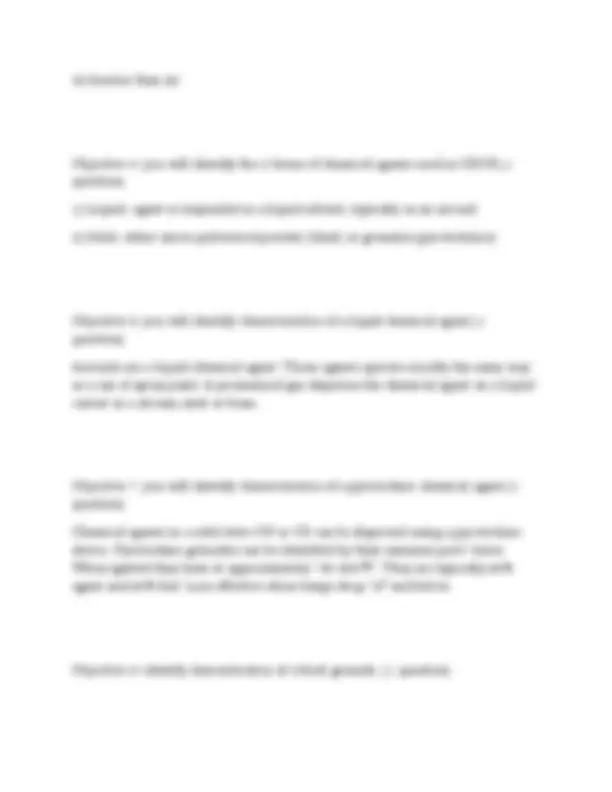
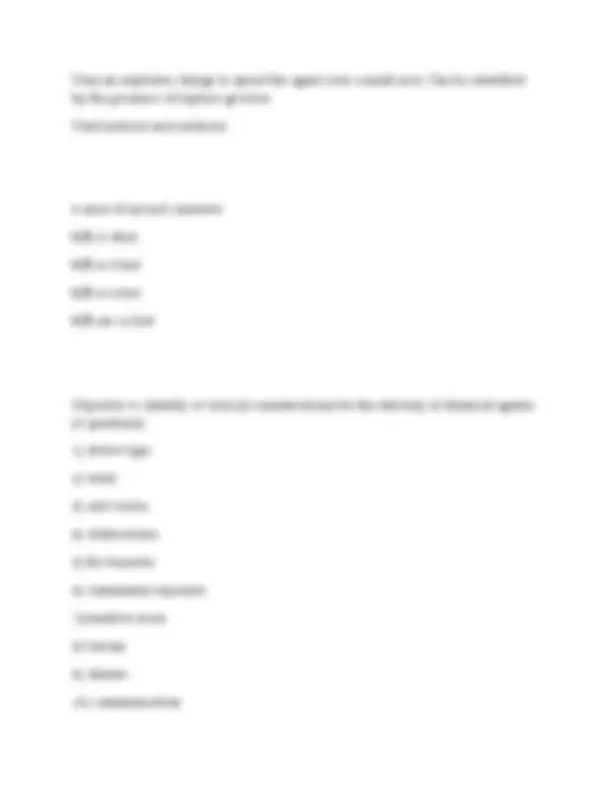
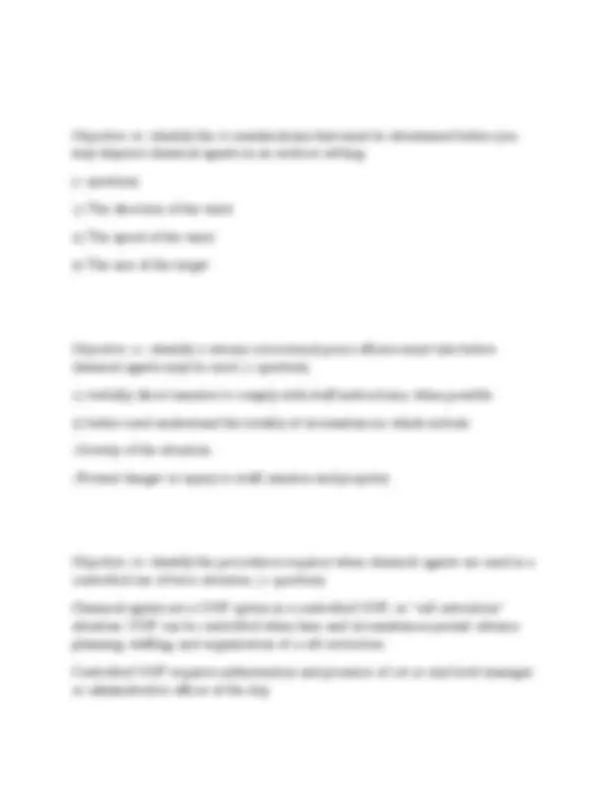
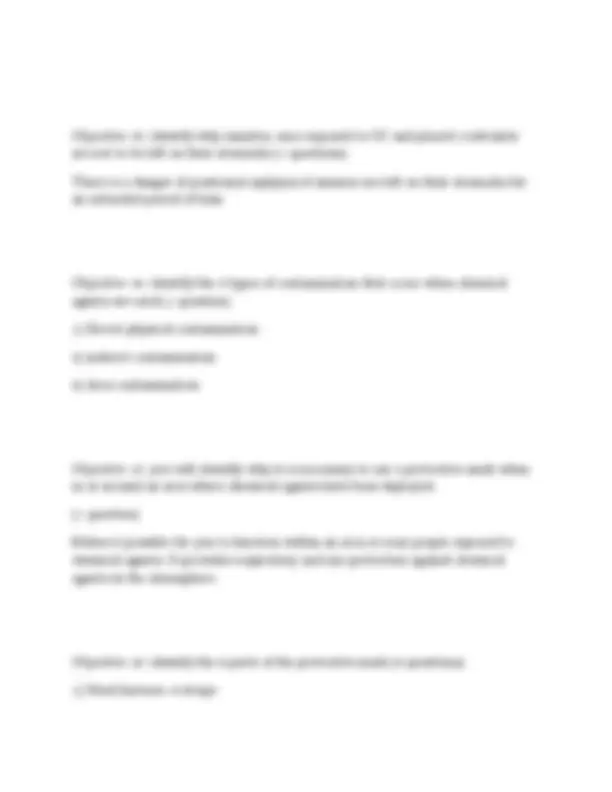
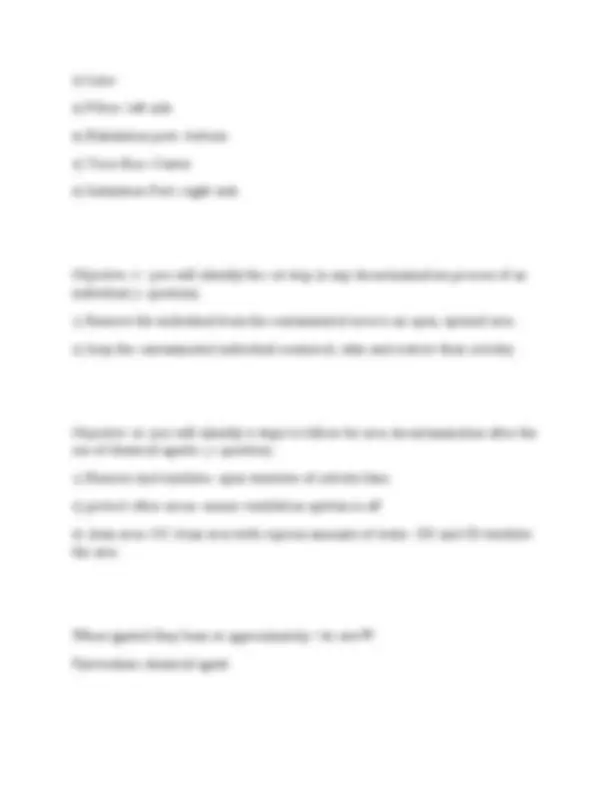
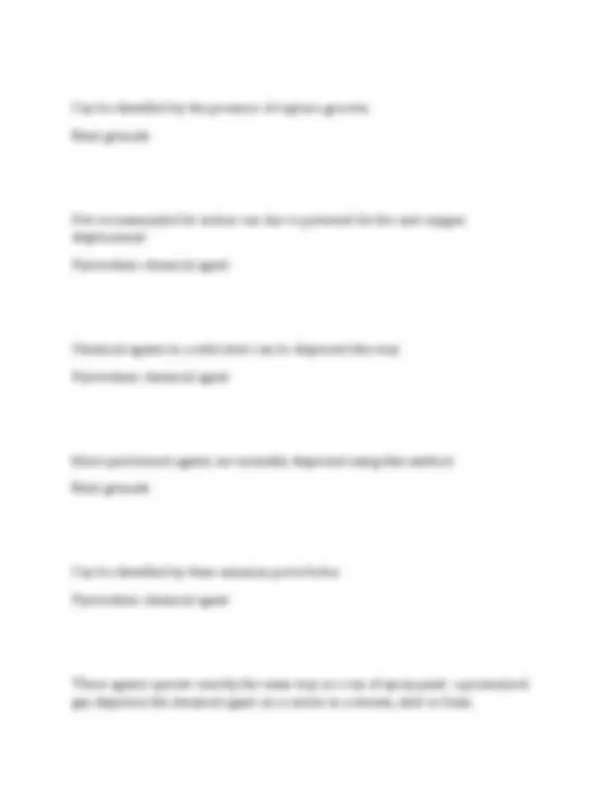
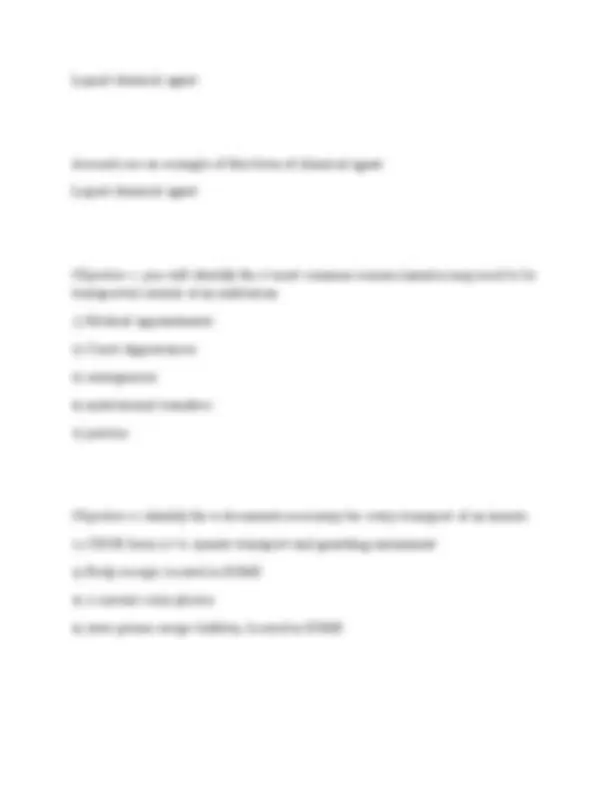
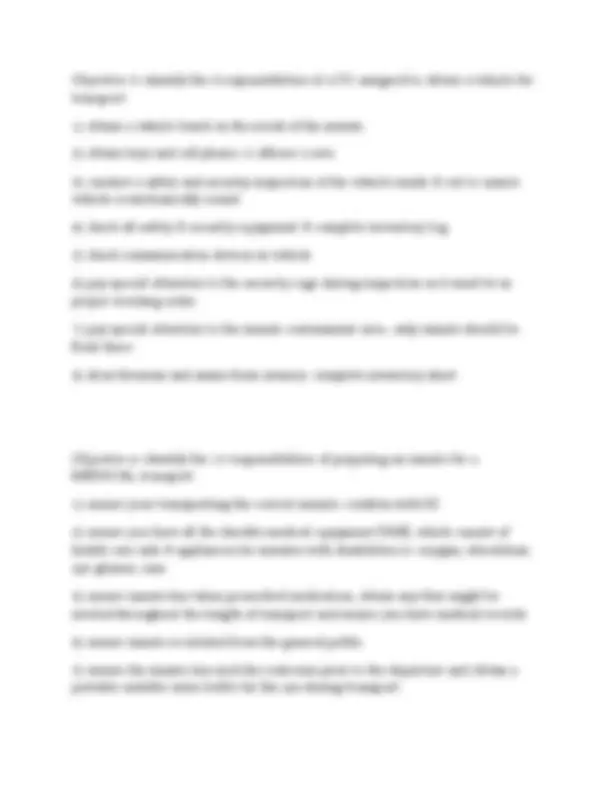
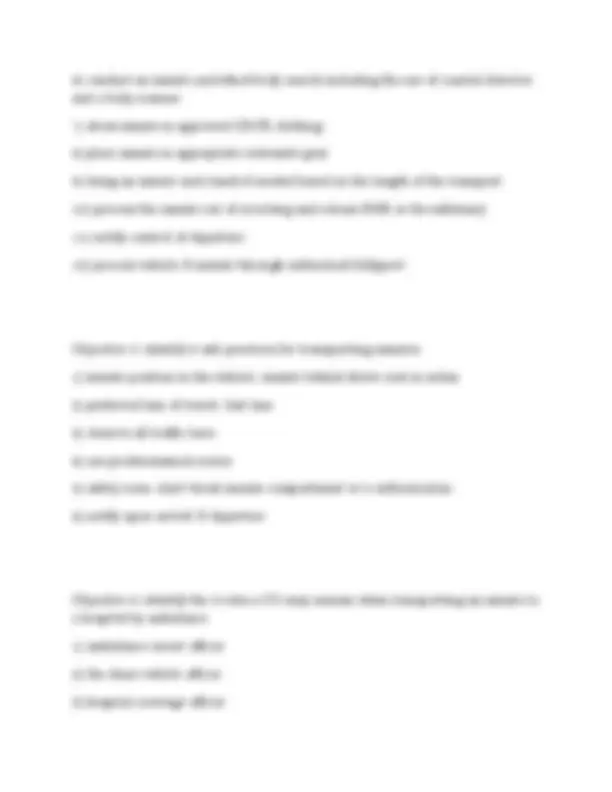
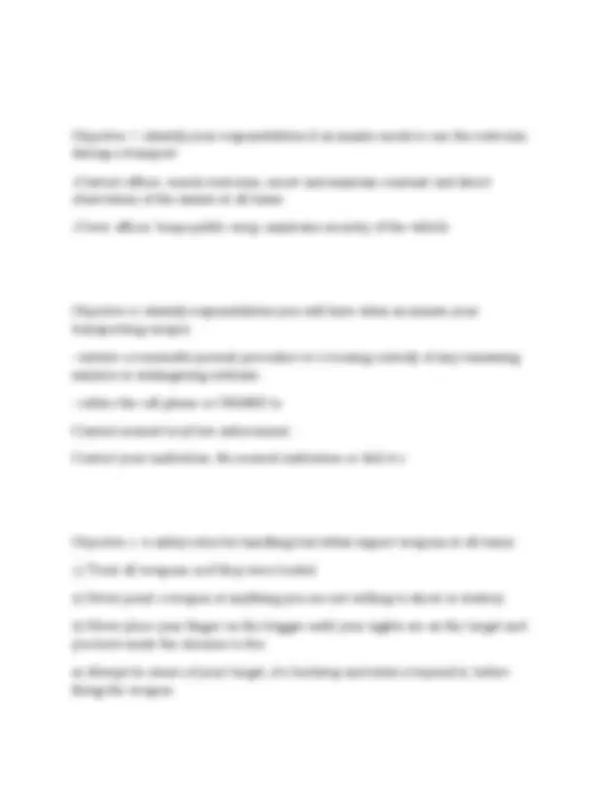
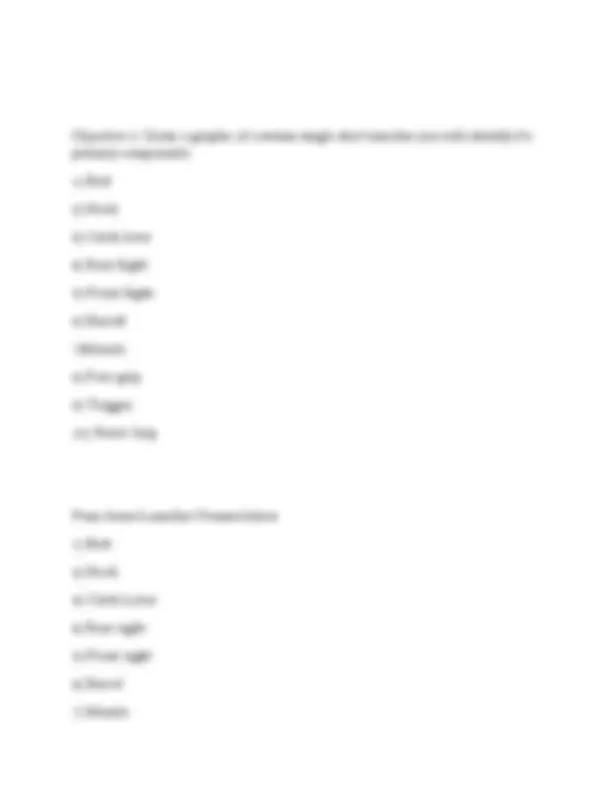
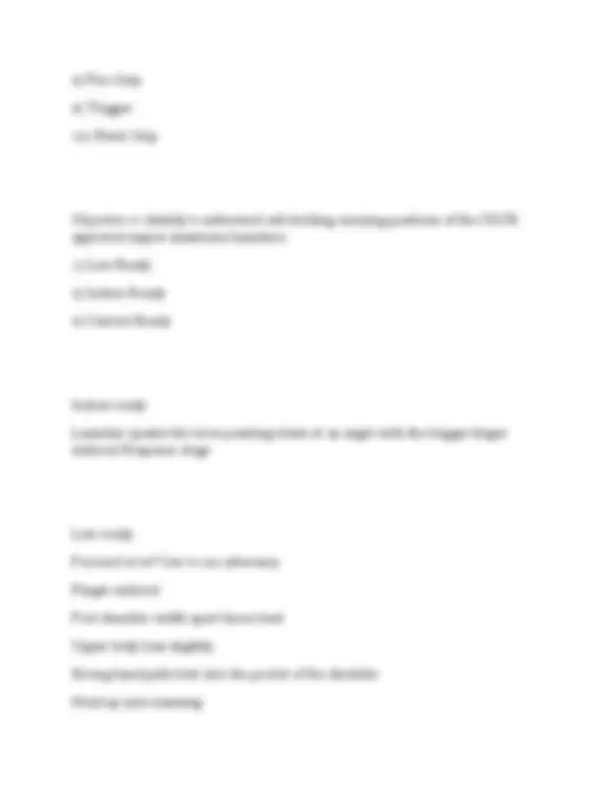
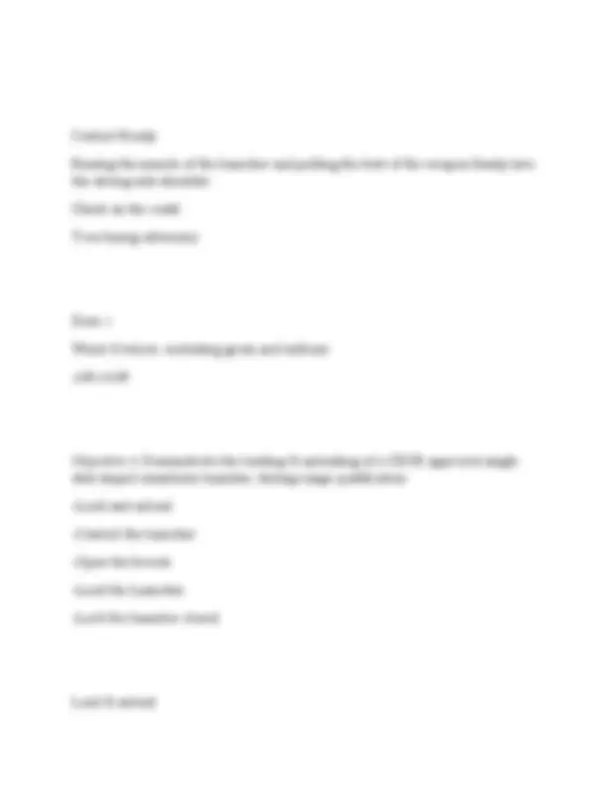
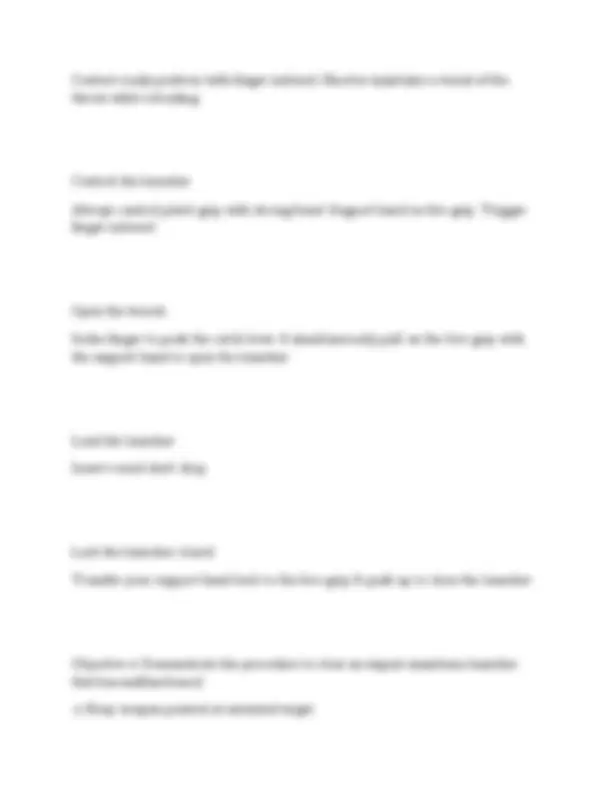
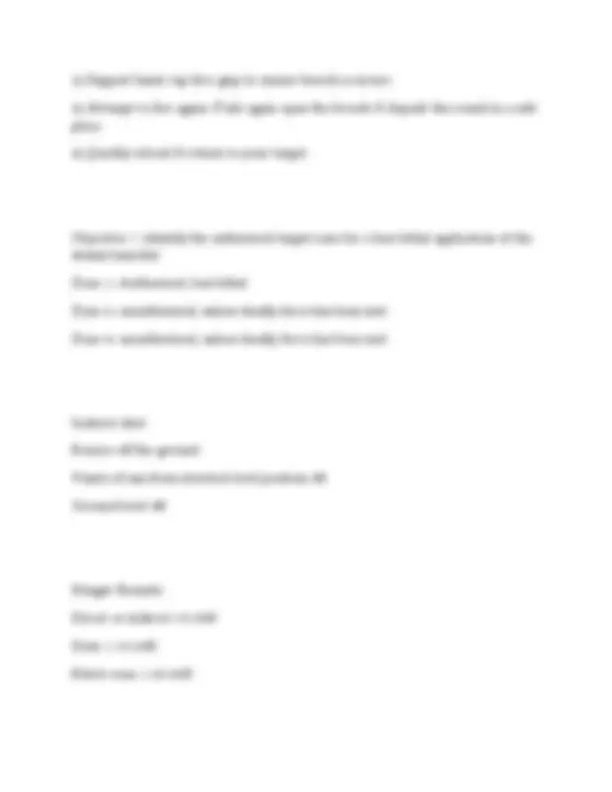
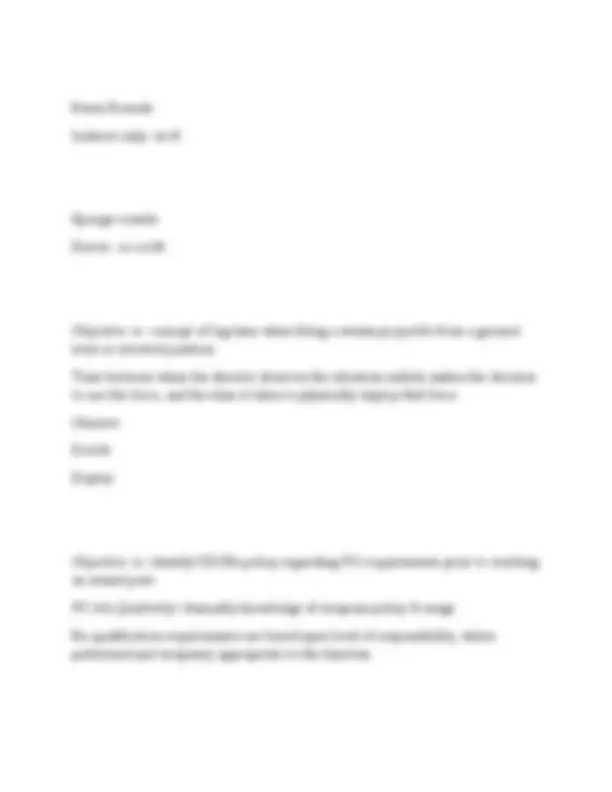
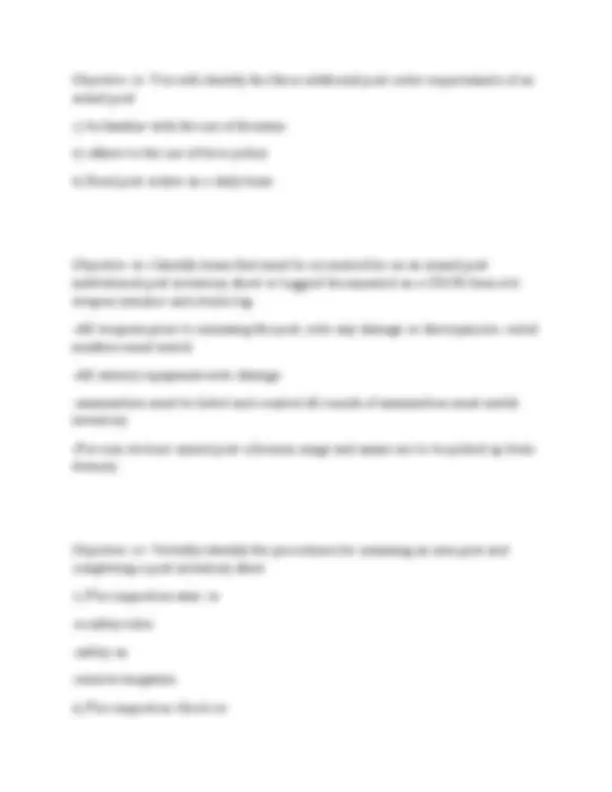
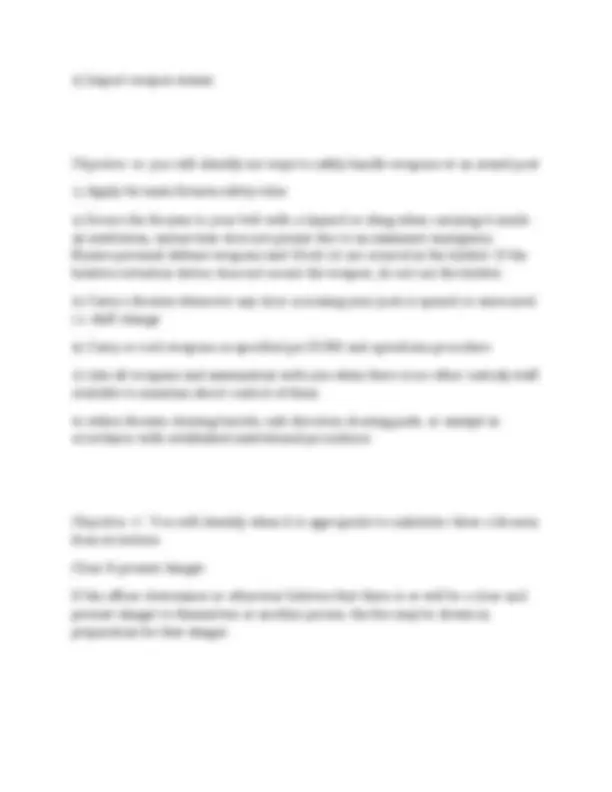
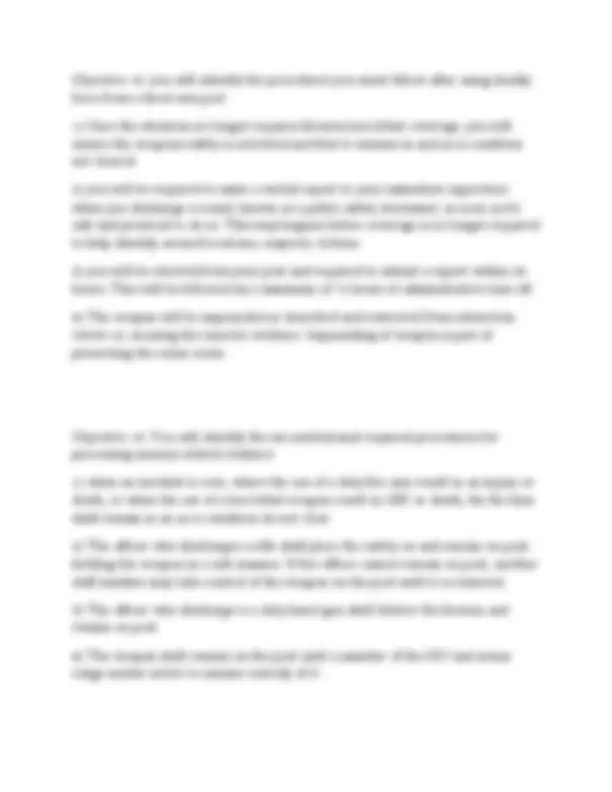
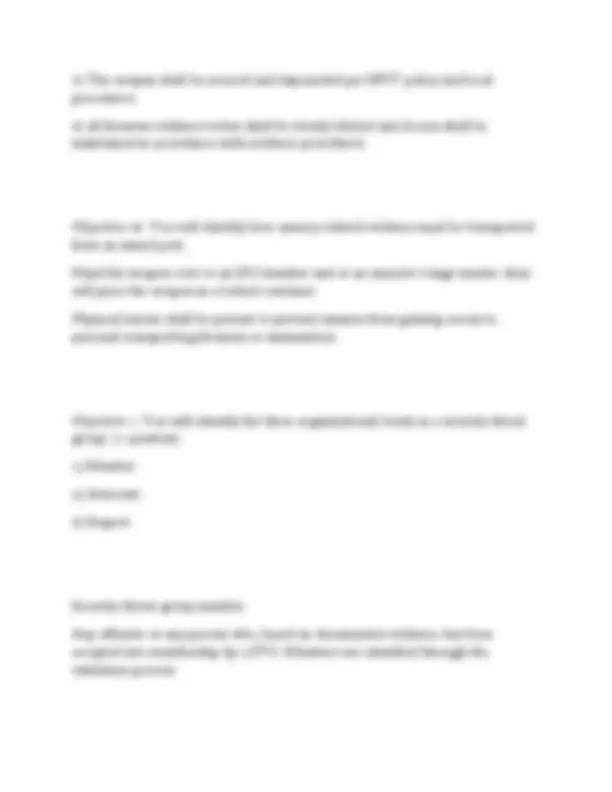
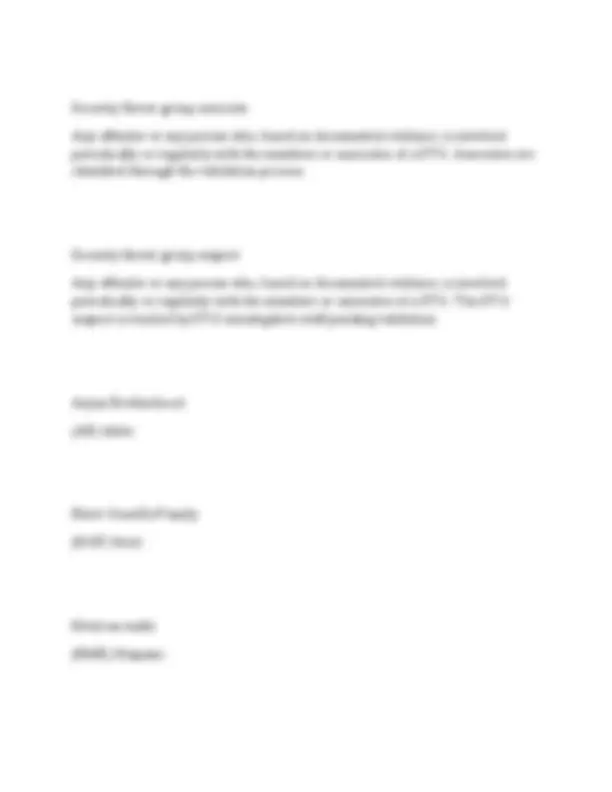
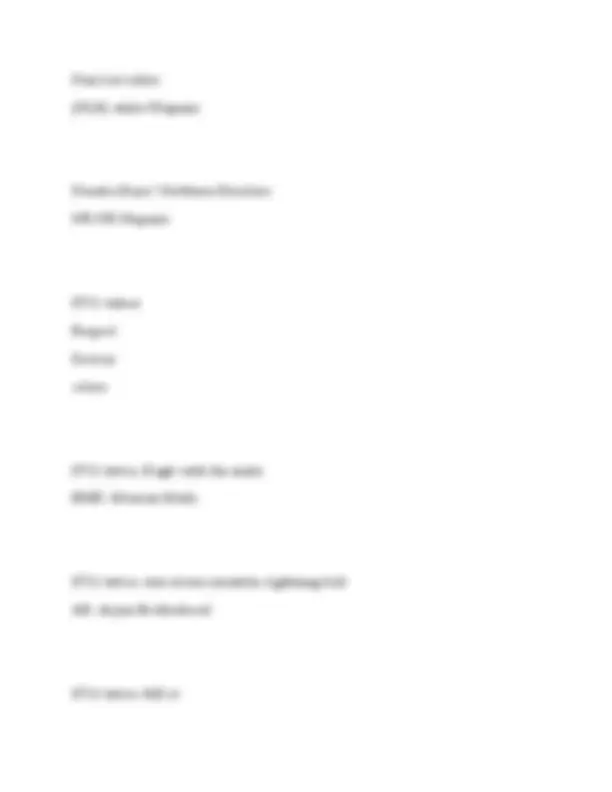
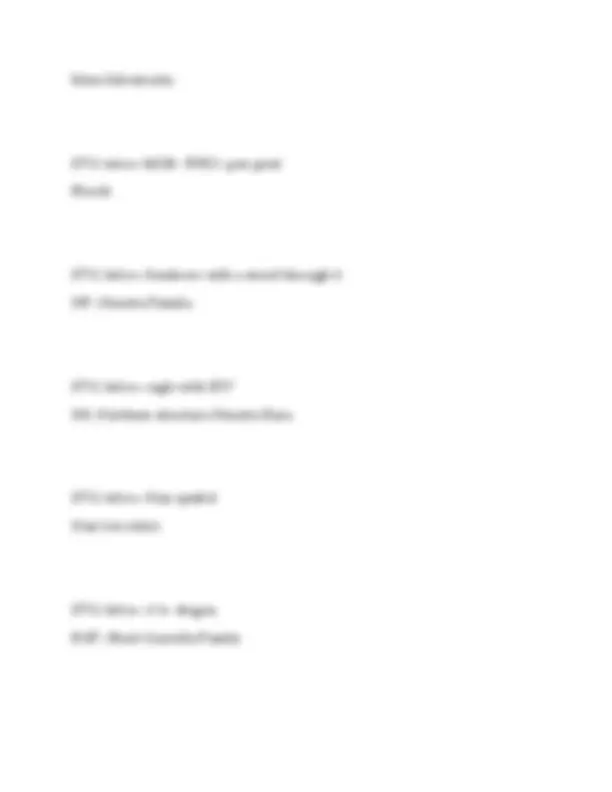
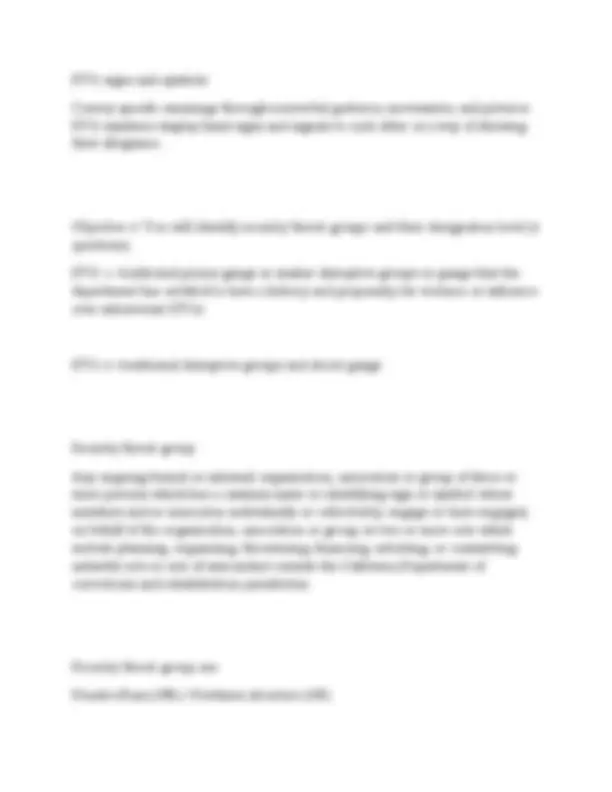
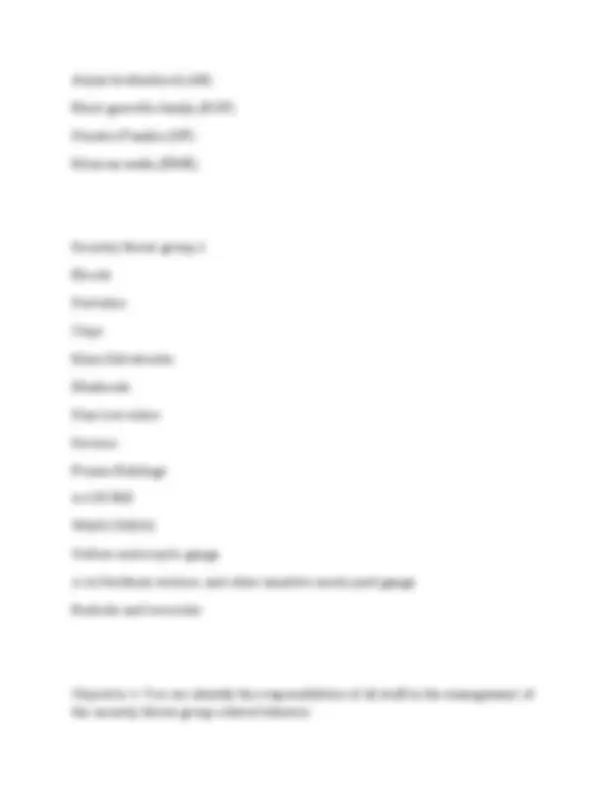
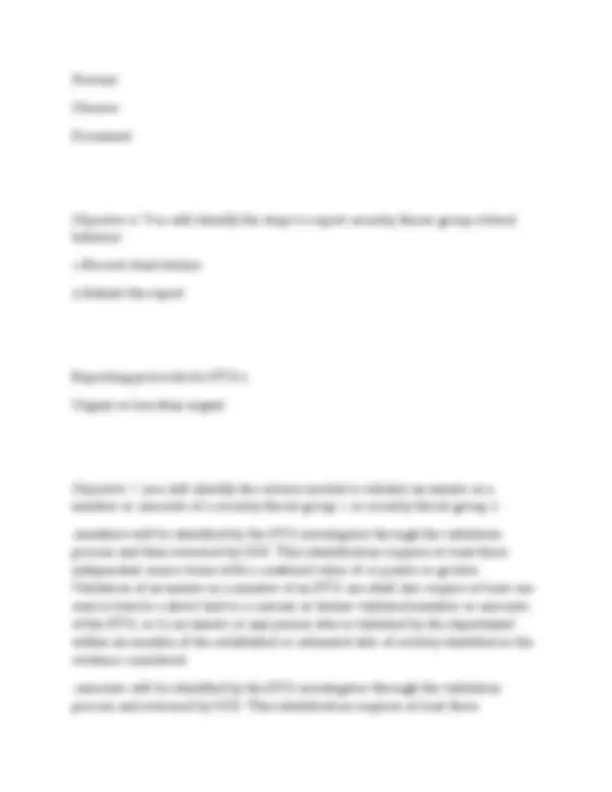
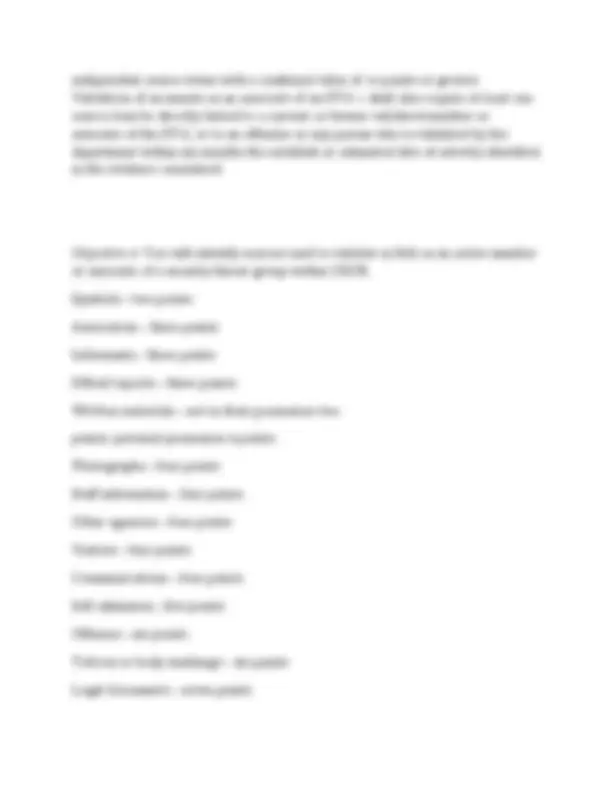
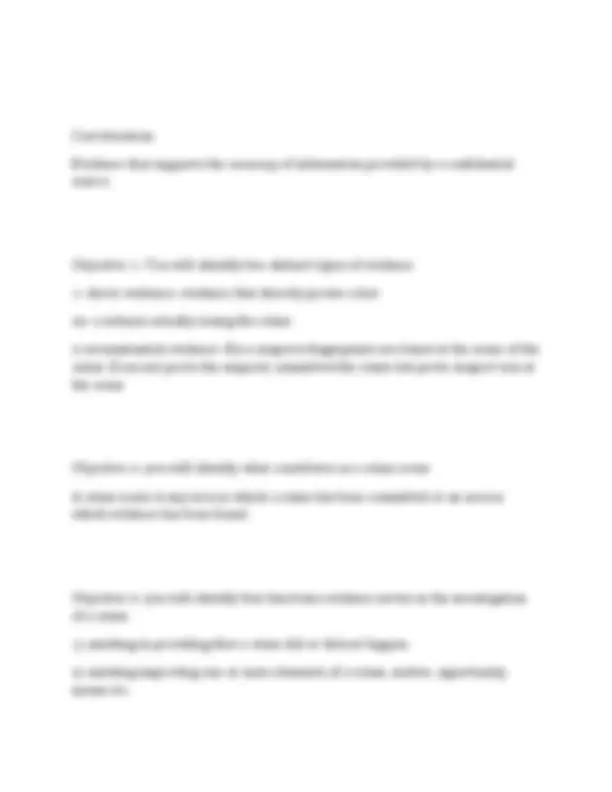
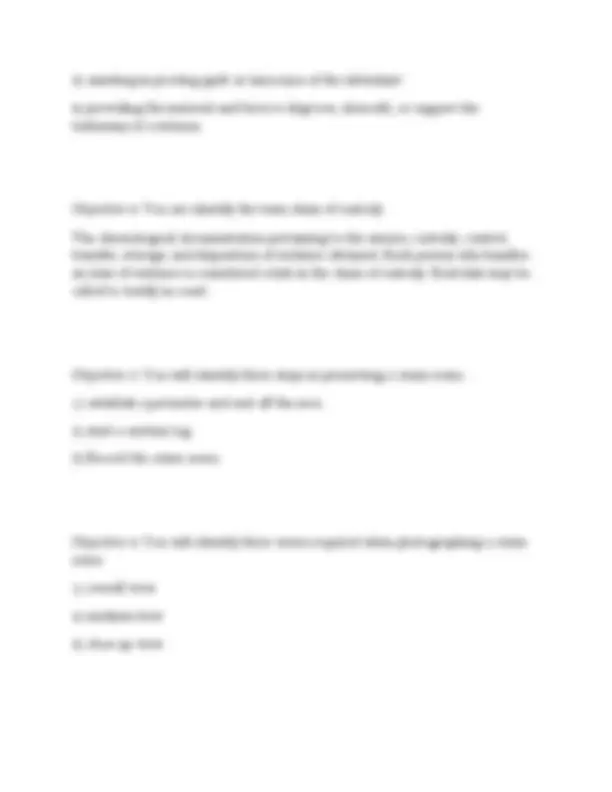
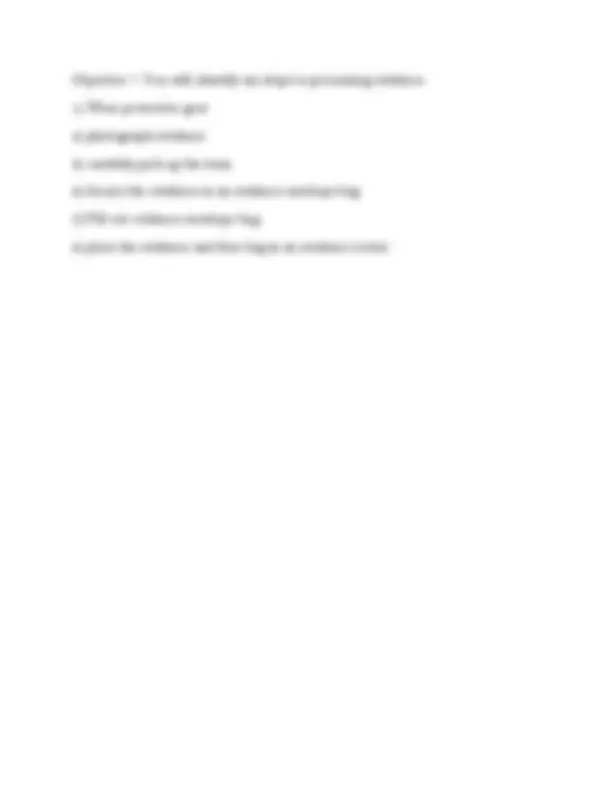


Study with the several resources on Docsity

Earn points by helping other students or get them with a premium plan


Prepare for your exams
Study with the several resources on Docsity

Earn points to download
Earn points by helping other students or get them with a premium plan
Community
Ask the community for help and clear up your study doubts
Discover the best universities in your country according to Docsity users
Free resources
Download our free guides on studying techniques, anxiety management strategies, and thesis advice from Docsity tutors
CDCR MAJOR 1, 2 & 3 EXAMS 2025| CALIFORNIA DEPARTMENT OF CORRECTIONS AND REHABILITATIONS (CDCR) MAJOR 1, 2 & 3 EXAMS 2025-2026|300+Qs&As|ALREADY GRADED A+
Typology: Exams
1 / 86

This page cannot be seen from the preview
Don't miss anything!















































































What are california department of corrections and rehabilatation's use of force policy?
the departmental functions with Minimal Reliance on the Use of Force. Employees may use reasonable force as requiered in the performance of their duties. Identify the definition of reasonable force.
face with similar facts and circumstances, would consider necessary and reasonable to. Identify the definition of unnecessary force
Identify the definition of excessive force
a lawful purpose. Identify the definition of deadly force.
Identify the definition of non deadly force.
Identify when Reasonable force as defined in the use of force police may be used.
Overcome resistence Effect custody Subdue an attacker Goes Identify the definition of immediate use if force.
constitutes an imminent threat to institution security or the safety of persons.
Identify the CDCR use of force options.
lethal weapons, lethal weapons. Identify three requirements when using a controlled use of force
Identify the four situation in which deadly force may be used, according to the CDCR use of force policy
death or great bodily injury (GBI) 2 - prevent an escape from custody. 3 - to stop acts such as arson or riots that constitute an immediate jeopardy to institutional security and because of their magnitude are likely to result in escapes, great body injury, or the death of other persons. 4 - to dispose of seriously injured or dangerous animals when no other disposition is practical. What's ooda?
Orient Decide Act Scenario you will determinate if the situation poses a threat of death or great bodily injury.
**- Loss of consciousness
**- deadly force
What are the primary methods of preventions of occupational exposures to blood borne, airborne and contact diseases.
Identify the 3 steps you take when equipment is missing and inmates have access to the area. 1 - notify your supervisorI NMEDIATELY. 2 - stop everything you are doing 3 - if inmates have any access to the area, freeze all movement to stop the missing item from moving farther away. What are the ground rules each correctional peace officer must be aware of to maintain safety and security of the institution? 1 - maintain possesion of your issued keys at all time 2 - never allow inmates access to your keys 3 - never leave keys lying around 4 - personally hand keys from one person to the other 5 - never accept paper tags 6 - do not duplicate keys 7 - do not say key numbers out loud 8 - if a key breaks in a door, contact your supervisor immediately, do not leave the key unattended if broken in door. 9 - never leave anything unsecured or unlocked.
Identify the safety rules you need to follow to remain safe in the correctional setting 1 - be safe while opening doors. 2 - observe area around the door or door opening. 3 - place a foot in front of the door prior to unlocking. 5 - if you take keys home accidentally, you will be required to bring the keys back to the institution. 6 - if you are negligent in handling keys, you may be held financially responsible and face disciplinary action. 7 - never loan your chits to anyone. 8 - always inspect all equipment. 9 - always report and discrepancies immediately. You will recognize how the information practices act applies to inmate information Inmate information that is maintained by the department must also be safeguarded and may only be released in accordance with your duties or need to know. You will identify a requirement for carrying an off-duty weapon according to the penal code As a correctional officer you may carry a personal firearm while off duty. It is your responsability to maintain your eligibily to carry concealable firearm off duty.
2 - CDCR ID card 3 - whistle 4 - weapons qualifications card (gold card) 5 - protective vest 6 - chits You will determine which items are authorized to bring into the institution
2 - code of ethics to regulate the conduct of its members 3 - a common set of principles and social goals 4 - a spirit of service to the public. Identify traits that demostrate professionalism in a correctional peace officer.
2 - gather true facts 3 - consider the consecuenses 4 - determine fiscal impact 5 - decide 6 - monitor and adjust Sense of victimization People who assume role (victim mentality) will compromise their ethics. Acts of omission When people assume the role of a victim, they told to stop doing what they are responsible for their actions. Administrative acts of commission Instead of just omitting duties and respondsbilities, staff commits administrative violations such as breaking small rules. Criminals acts of commission Staff engage in and rationalize behavior that just a few years before could not be imagined.
First Amendment: How being incarcerated affects a person's right to freedom of speech and freedom of religion. no absolute right to free speech. the government can regulate inmate in parolee speech where it is necessary to protect a legitimate government interest. (i.e. The Safety and Security of an institution) California prisons have facility chaplains to serve religious needs and provide reasonable accommodation for inmate practicing their own faiths. Fourth Amendment: how the Fourth Amendment relates to inmates and their visitors. peace officers can search inmates in the contents of their cells at any time for any reason, as long as it is done without abuse or harassment. Visitors will be subject to cursory searched, and visitors may be thoughroughly searched when: 1, a warrant has been obtained, 2, staff has reason to believe that the visitor is attempting to bring a prohibited item, or 3, if the visitor is arrested for a crime which endangers the security of the facility.